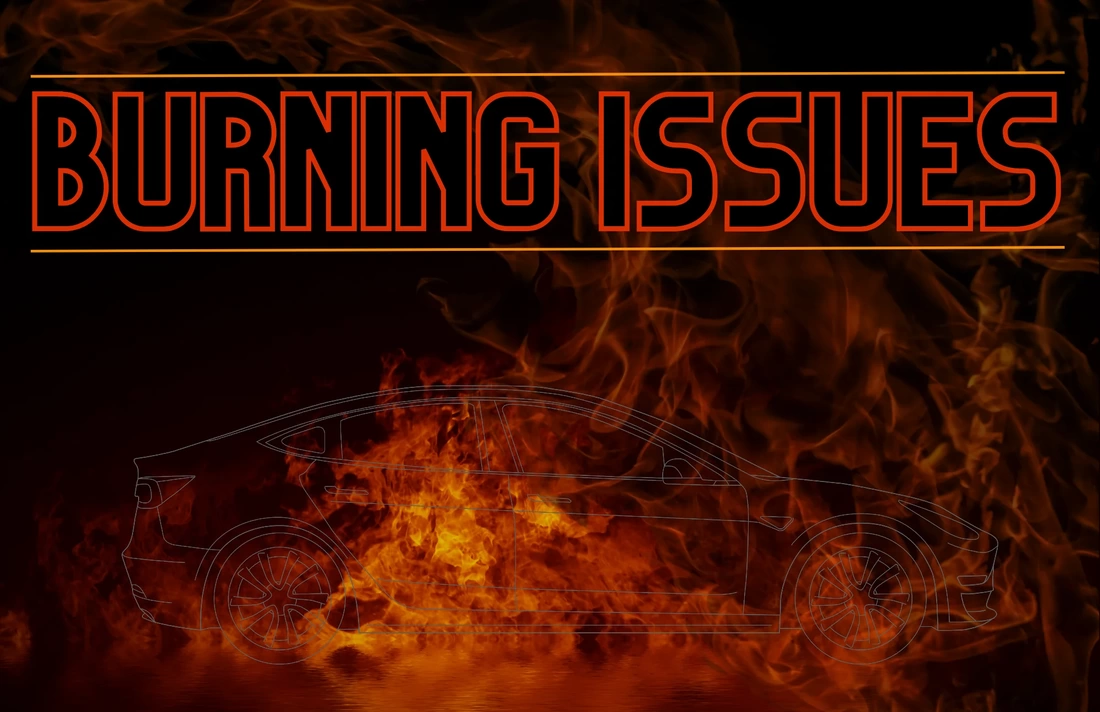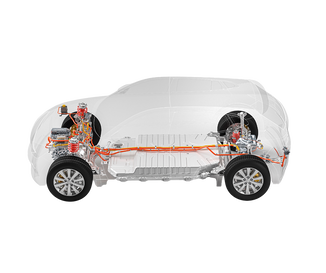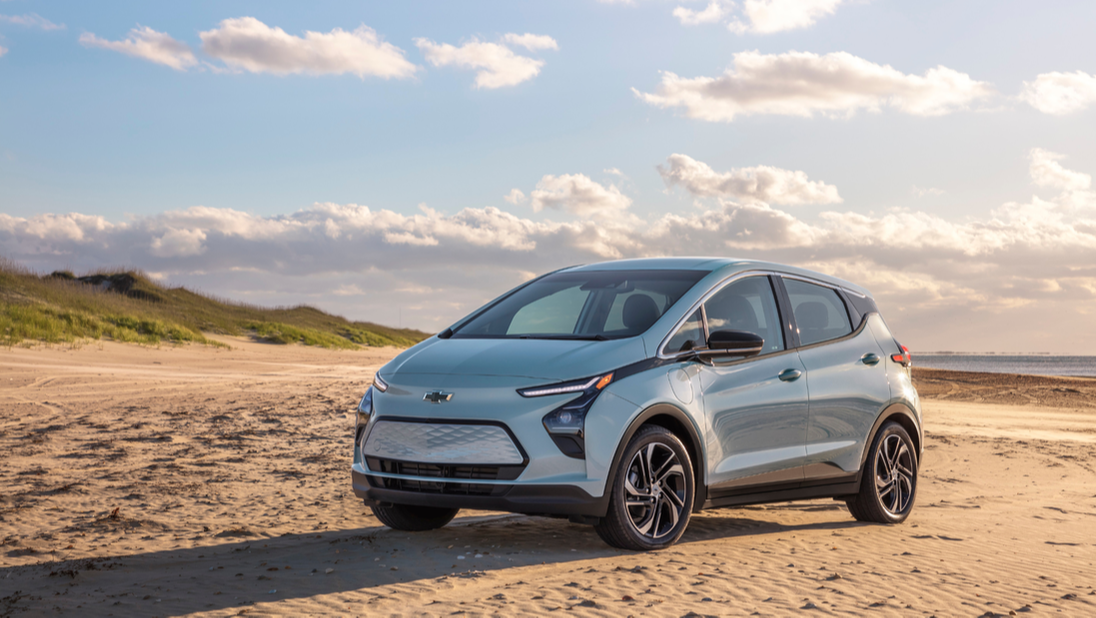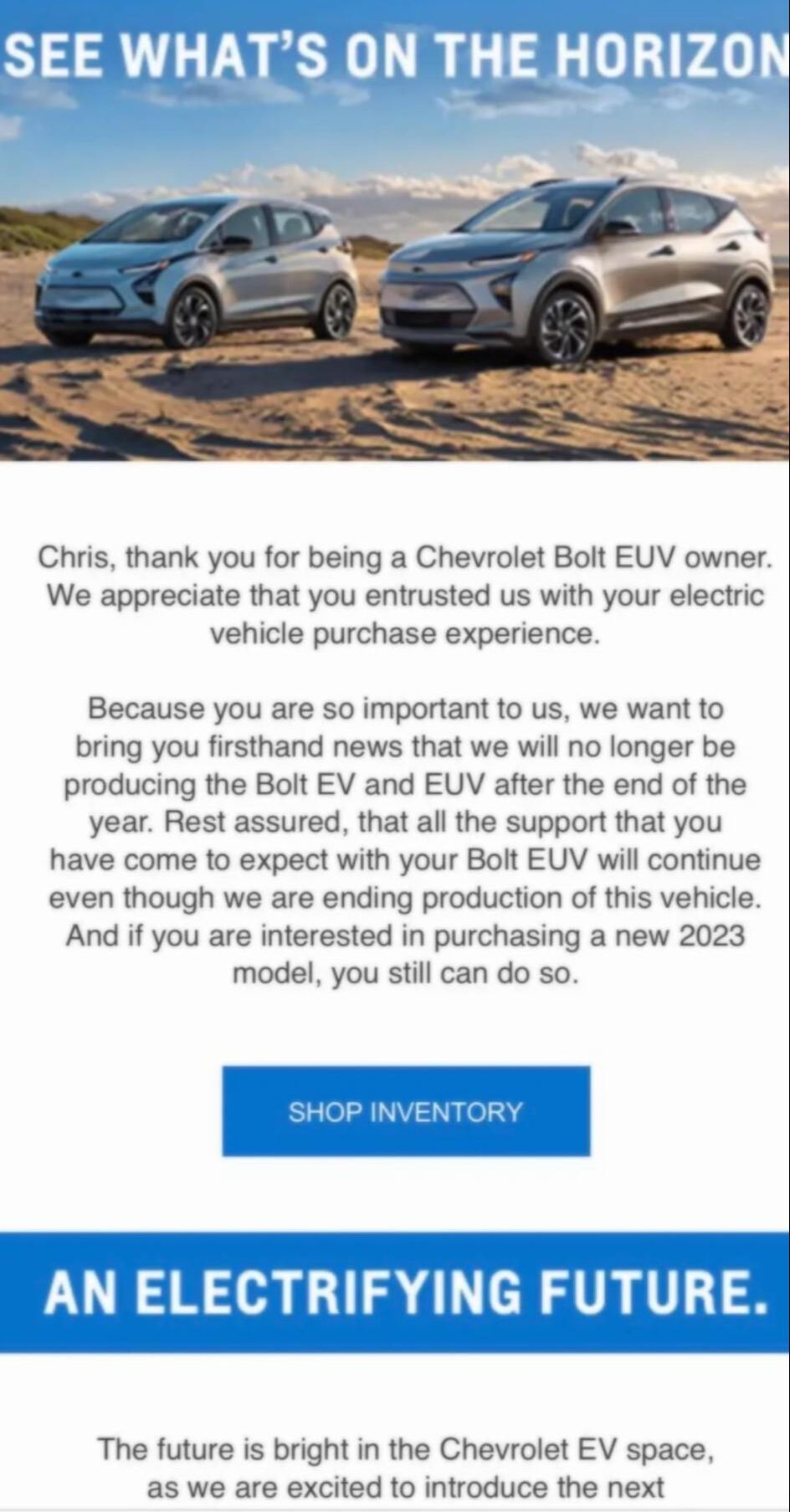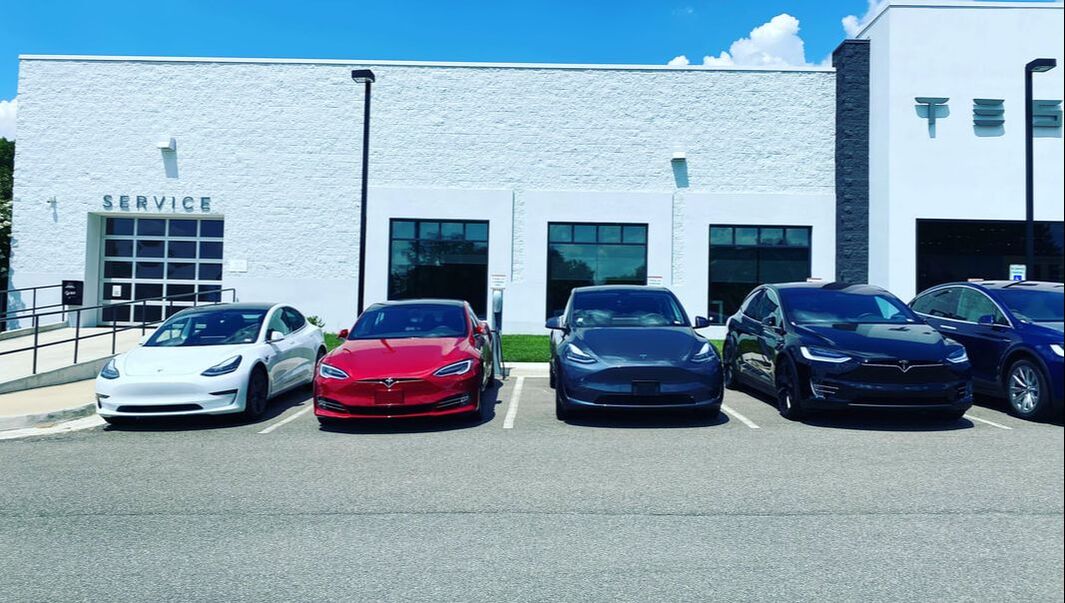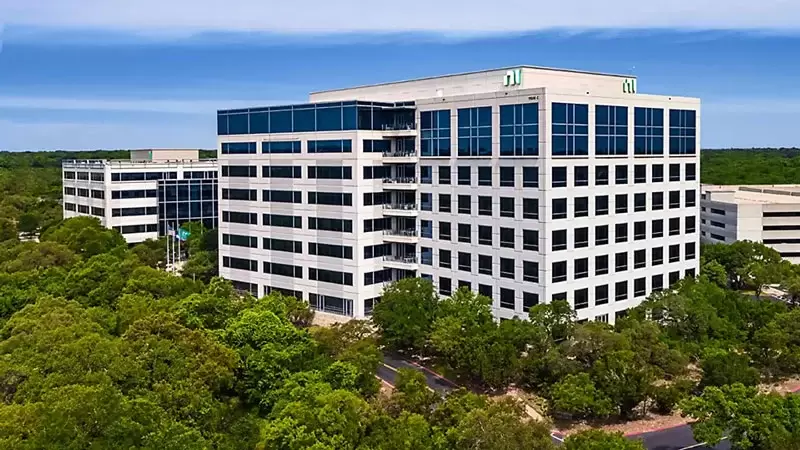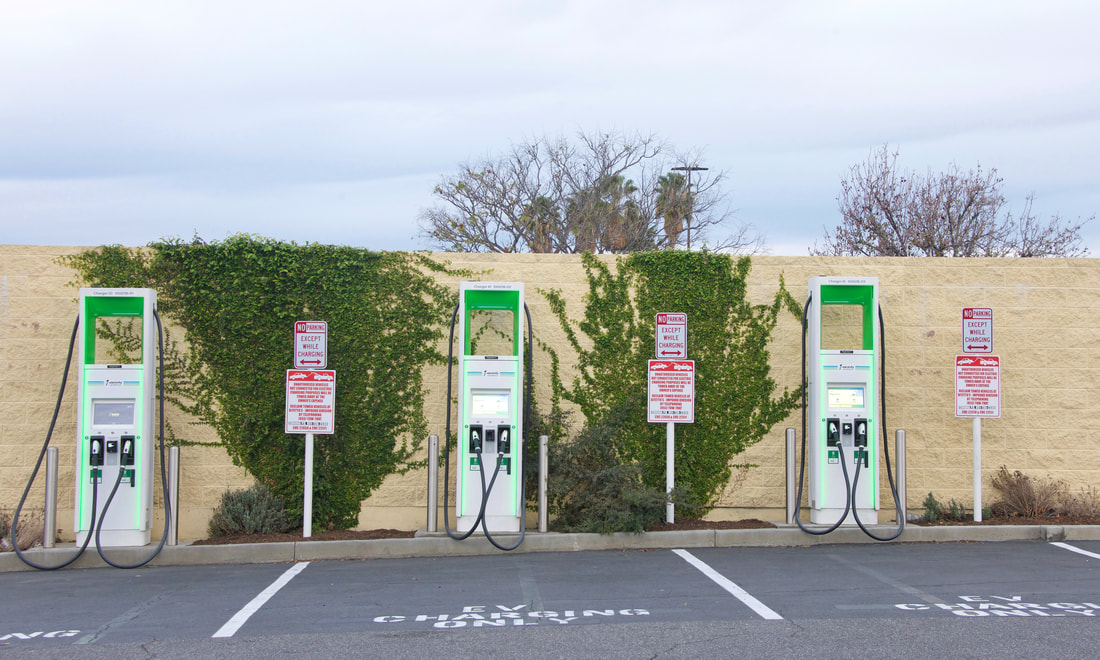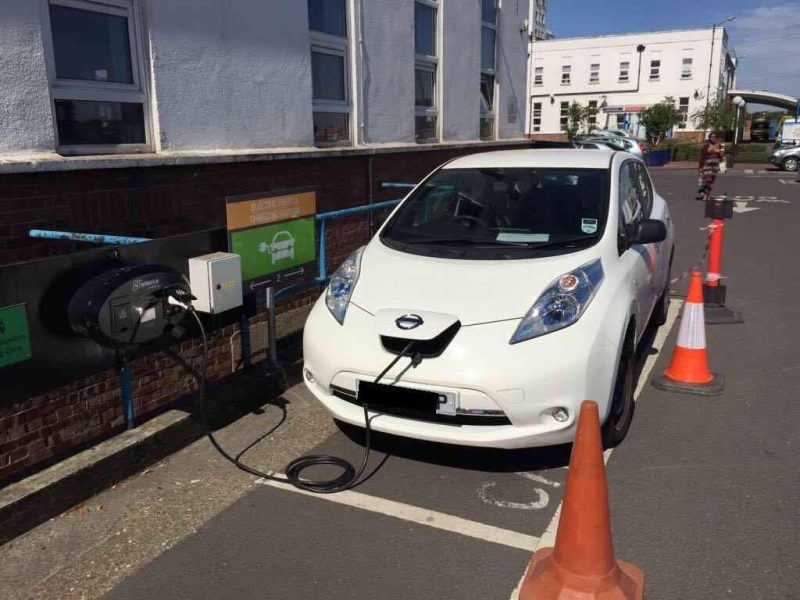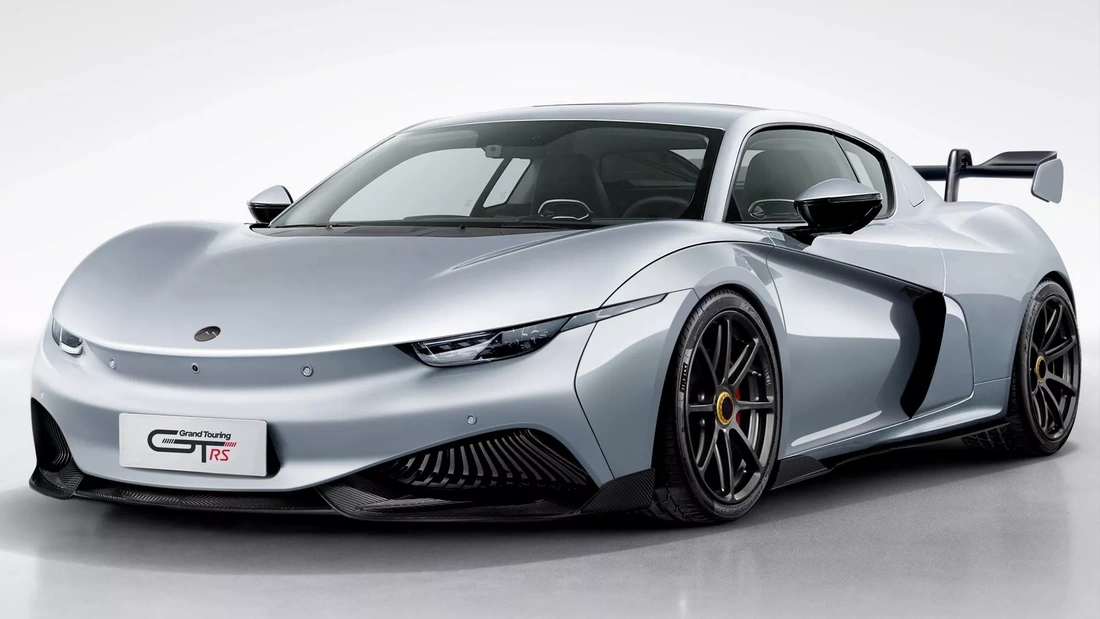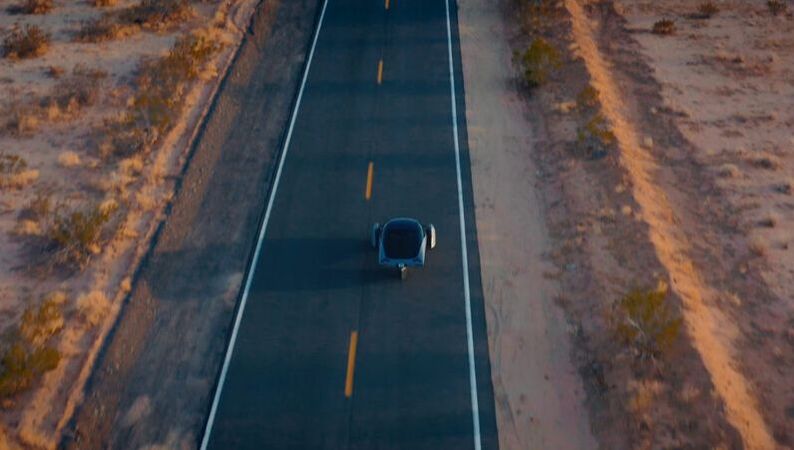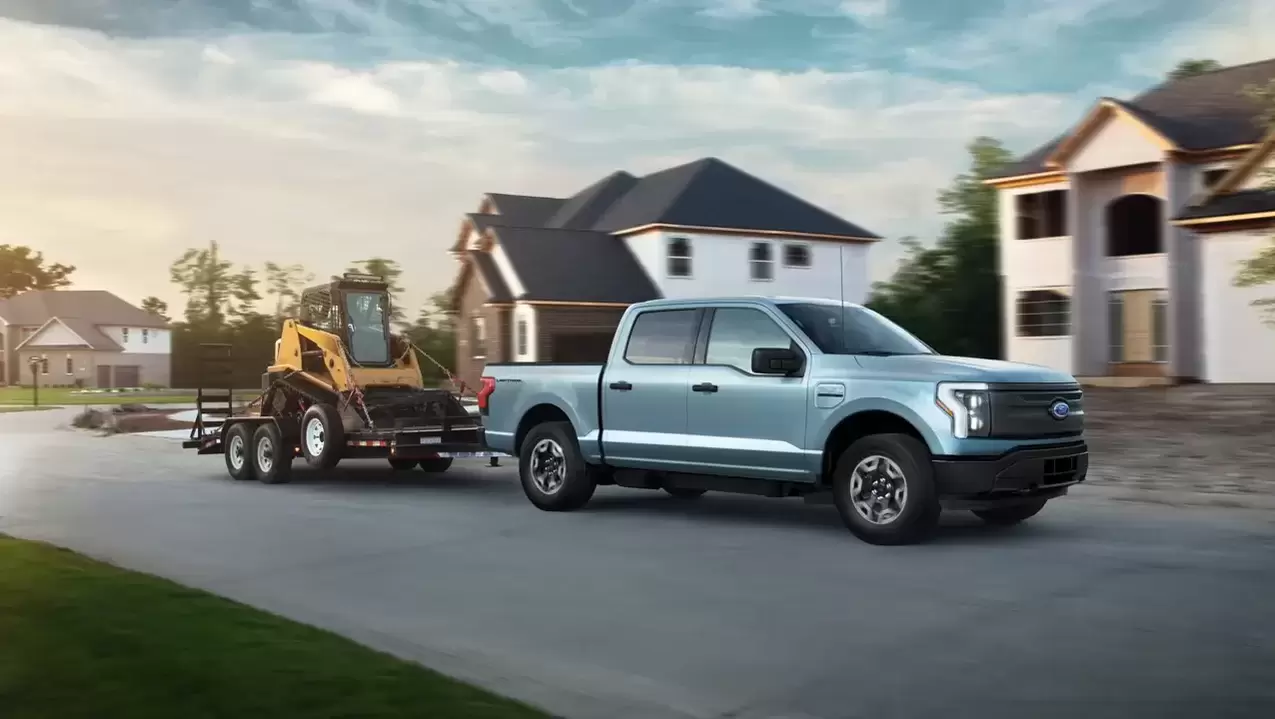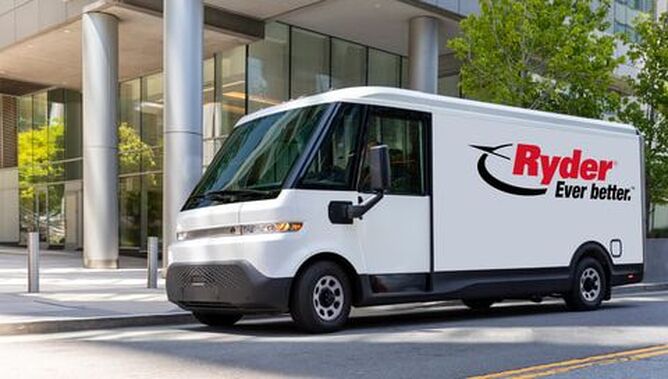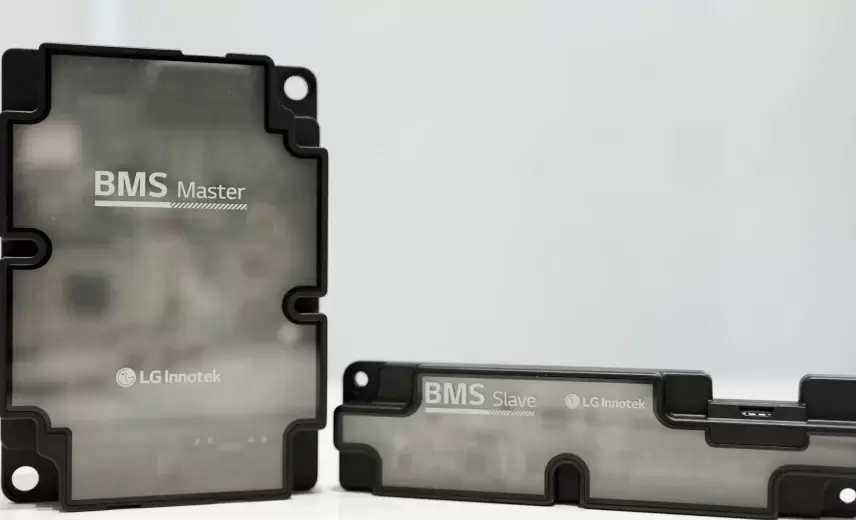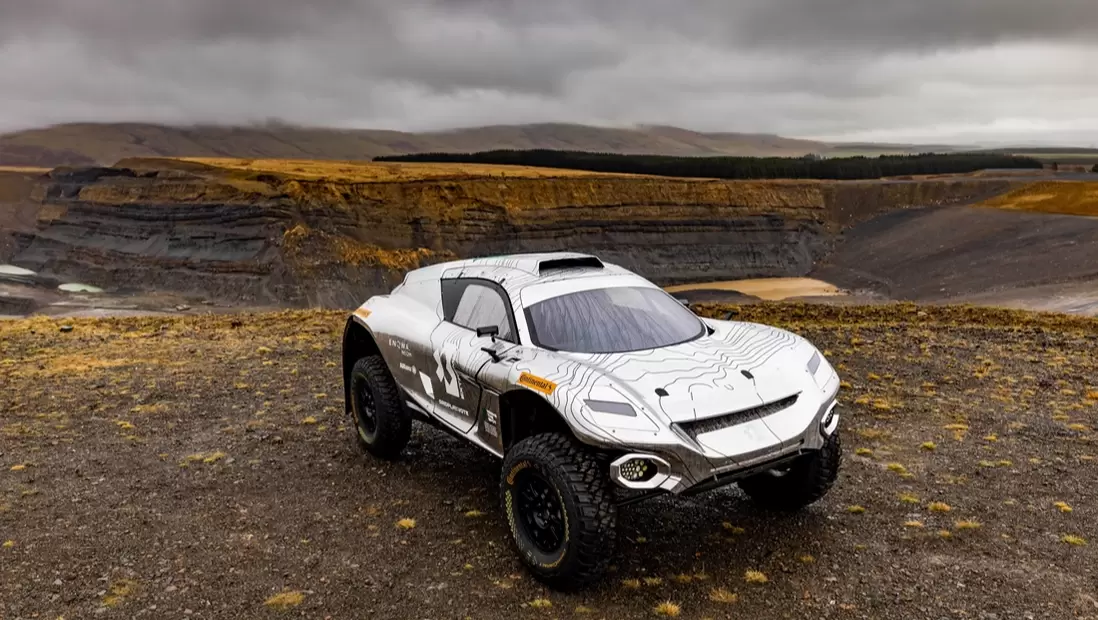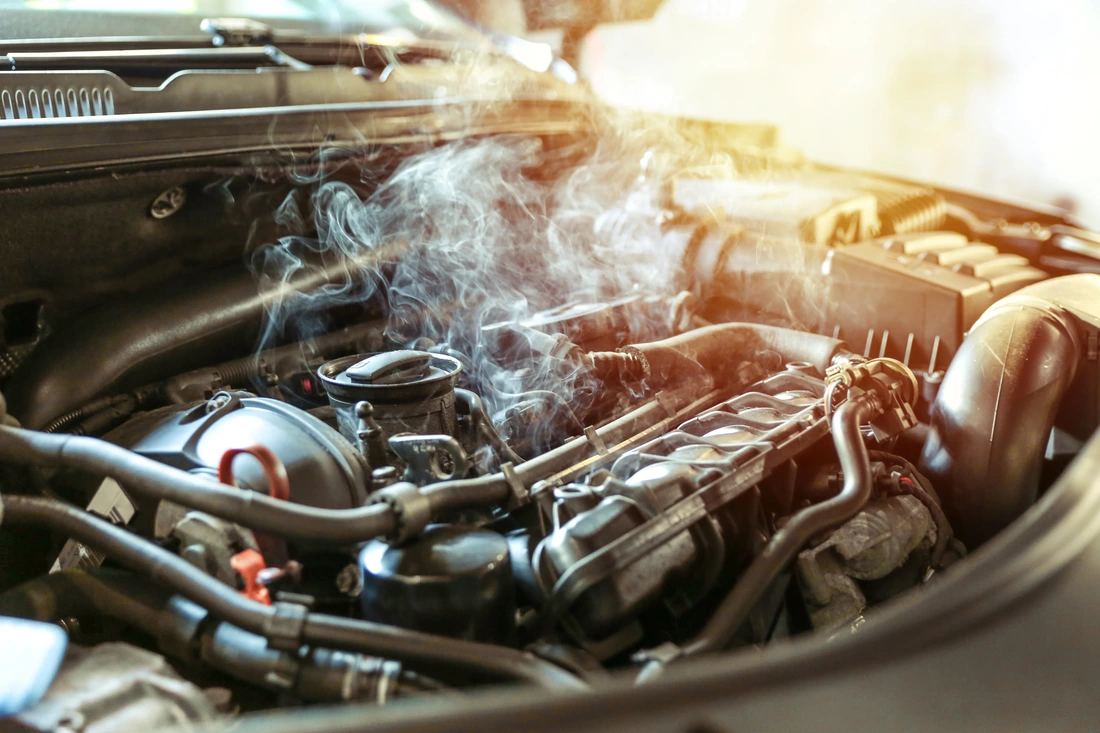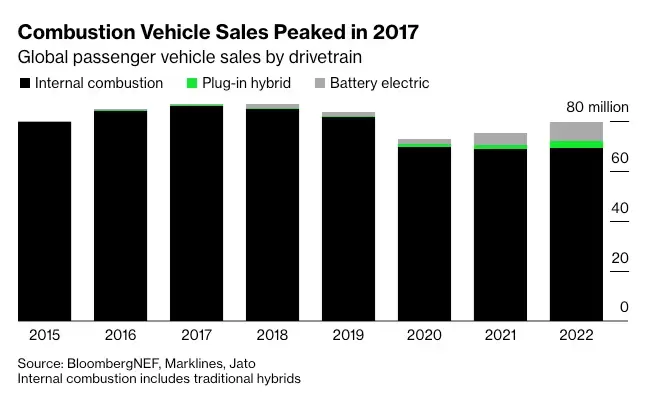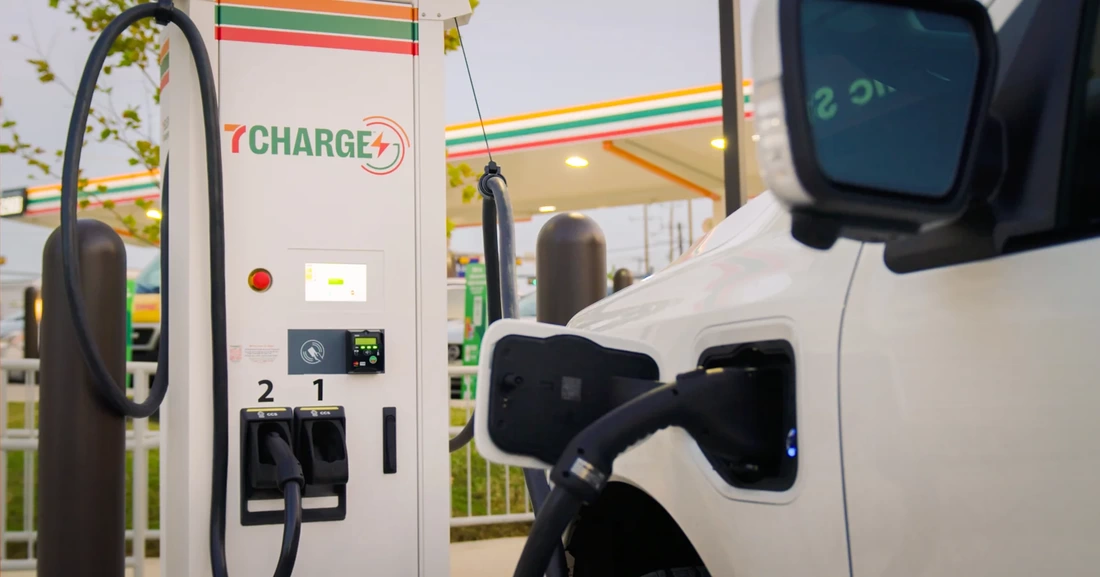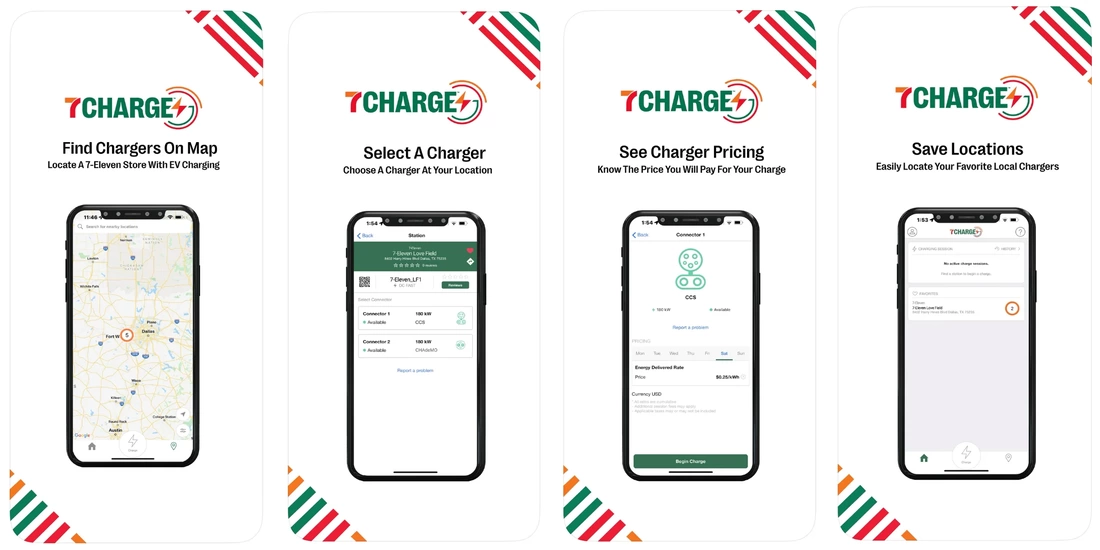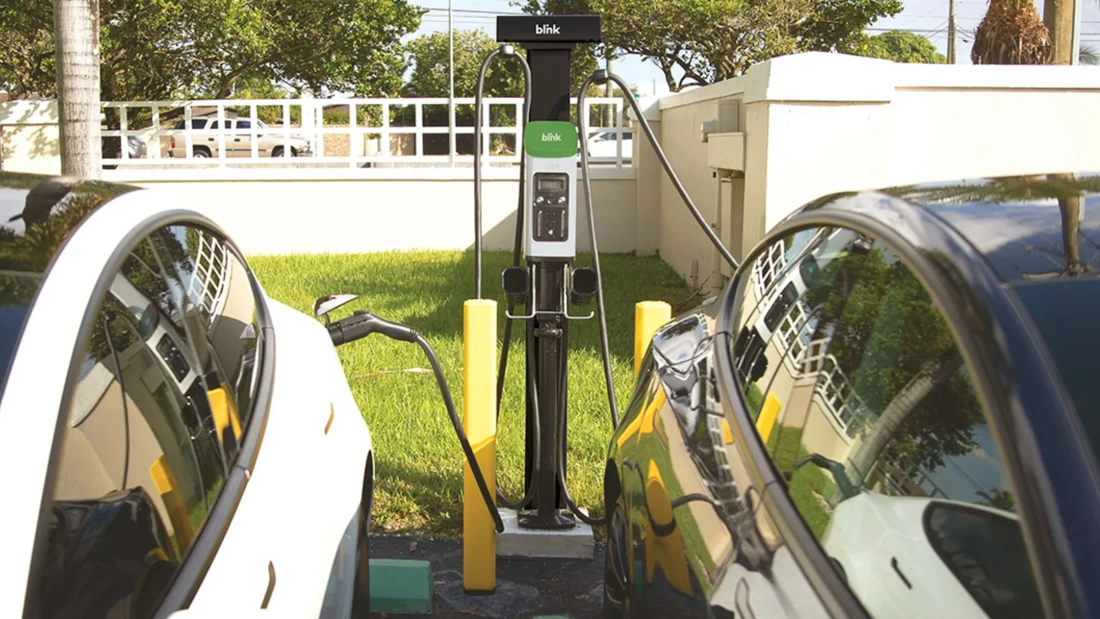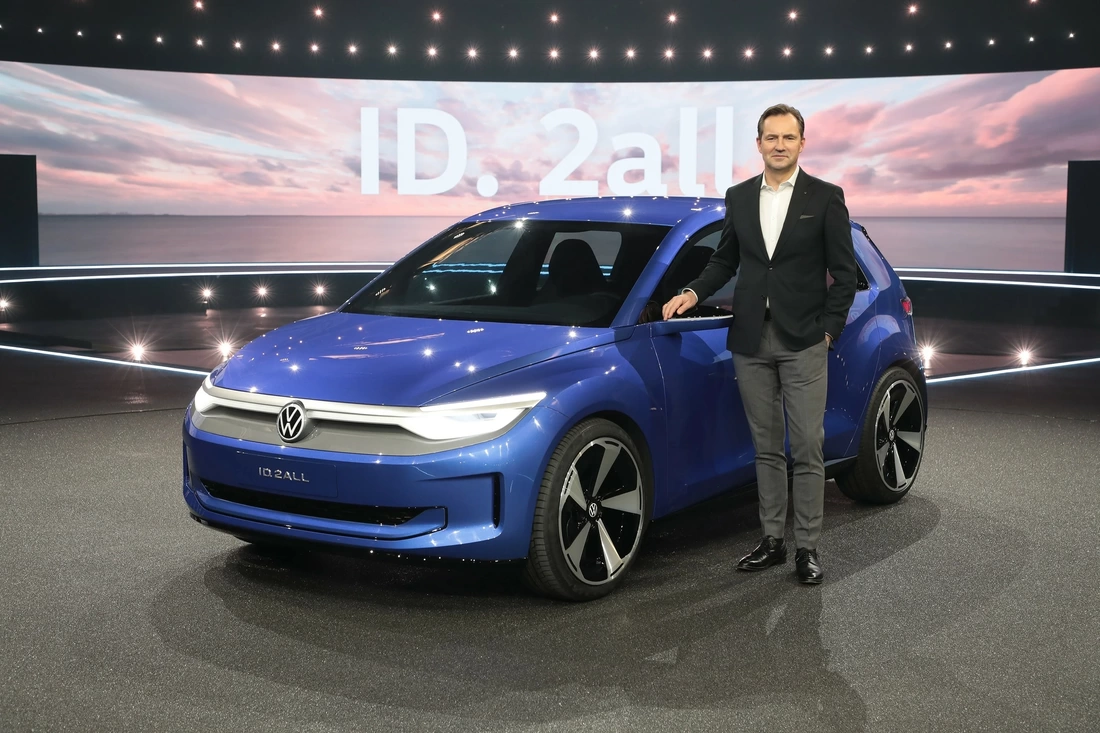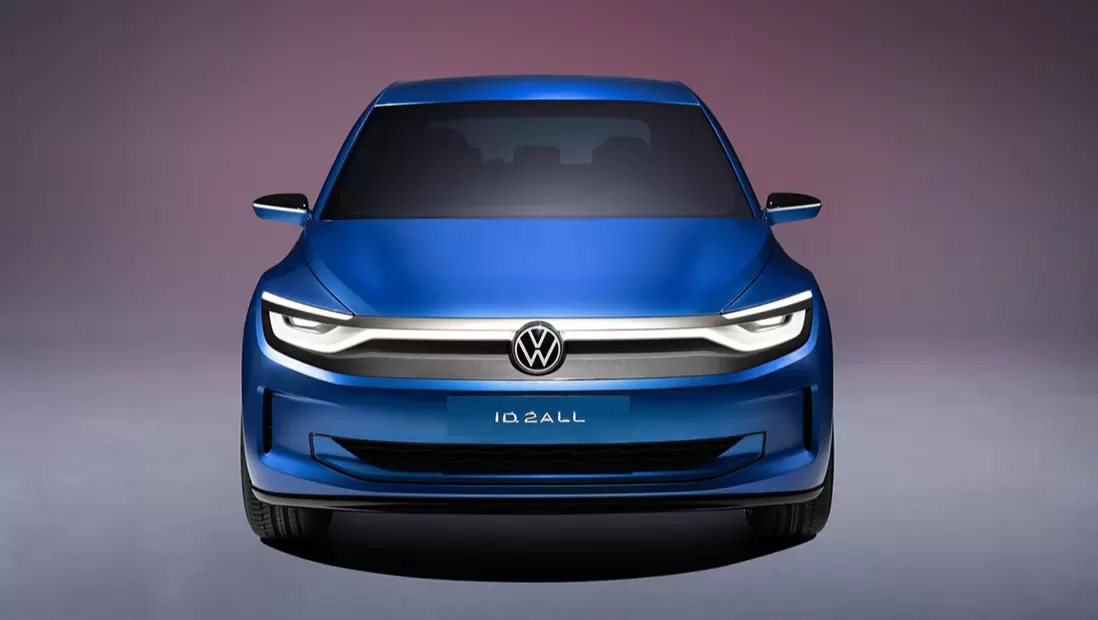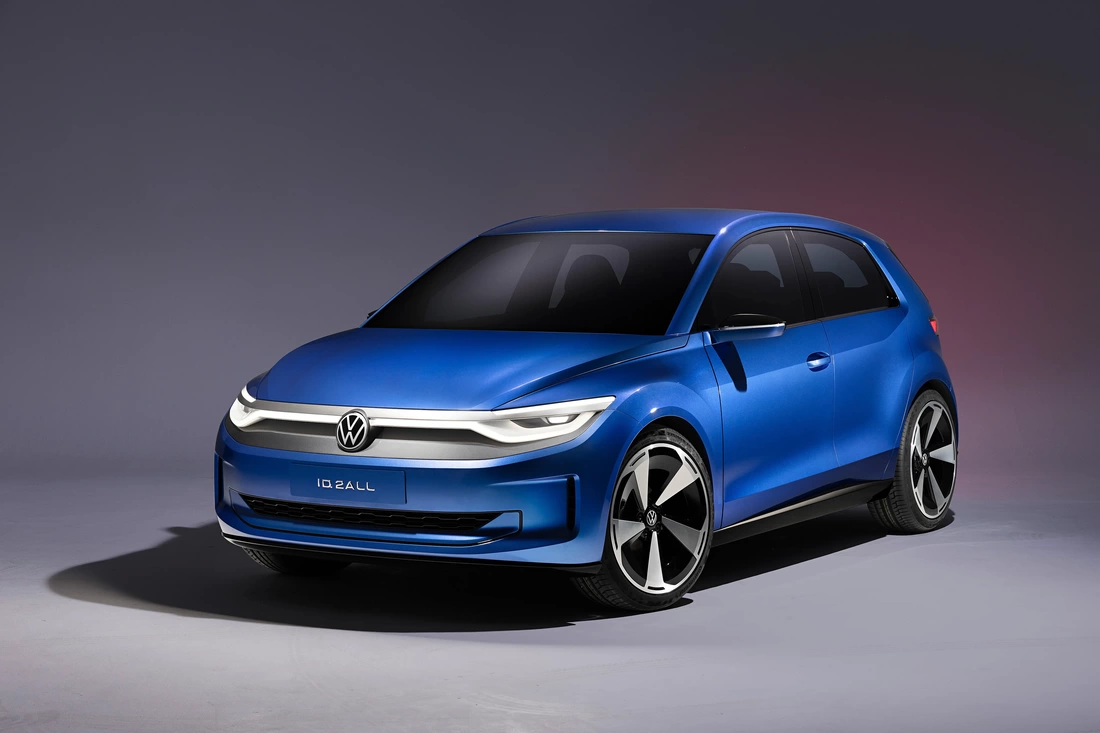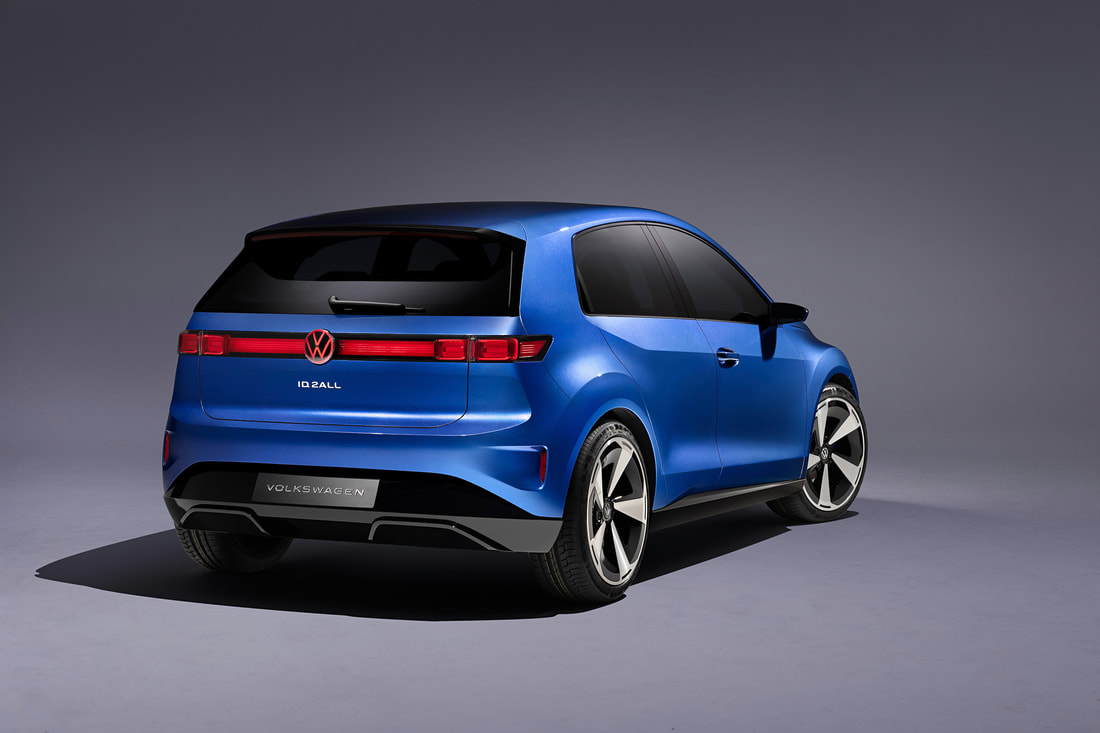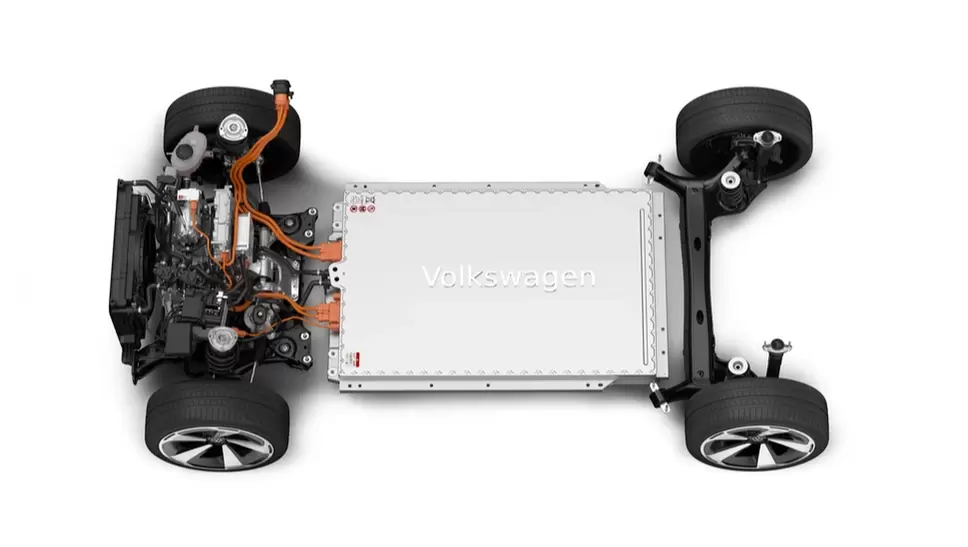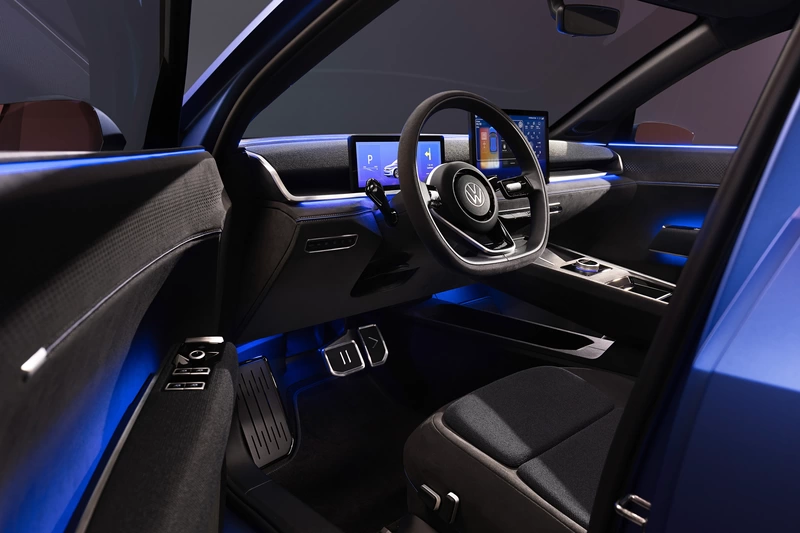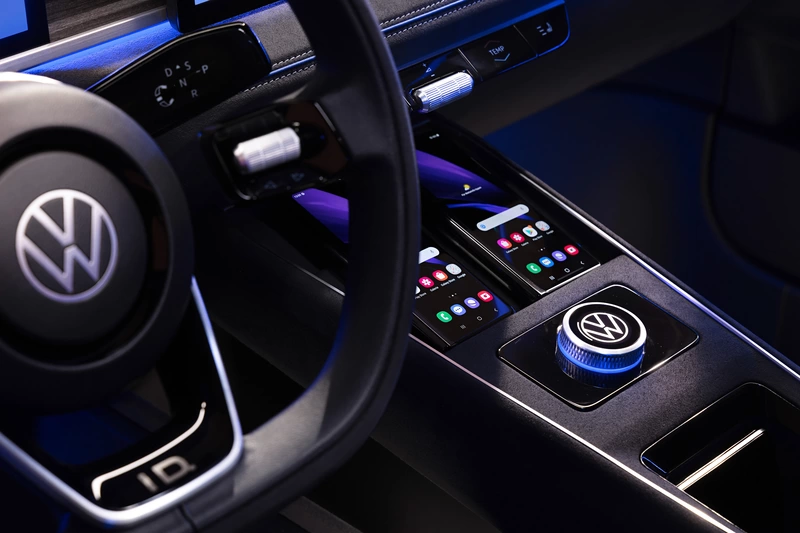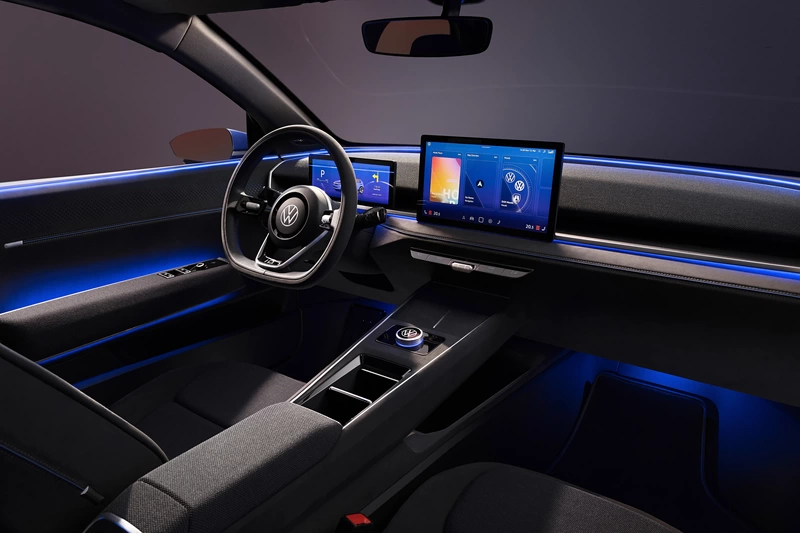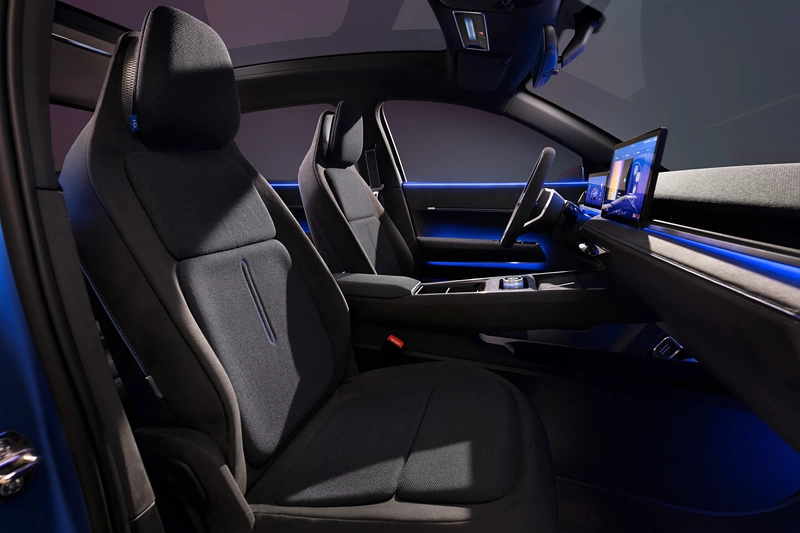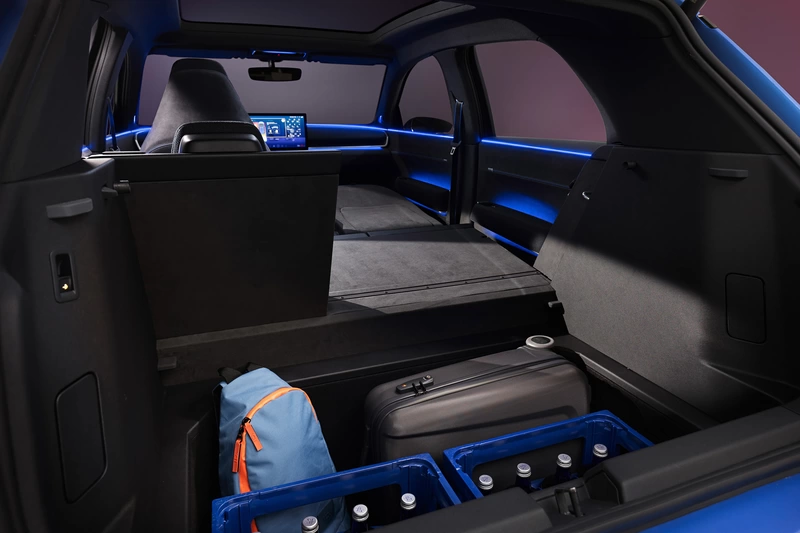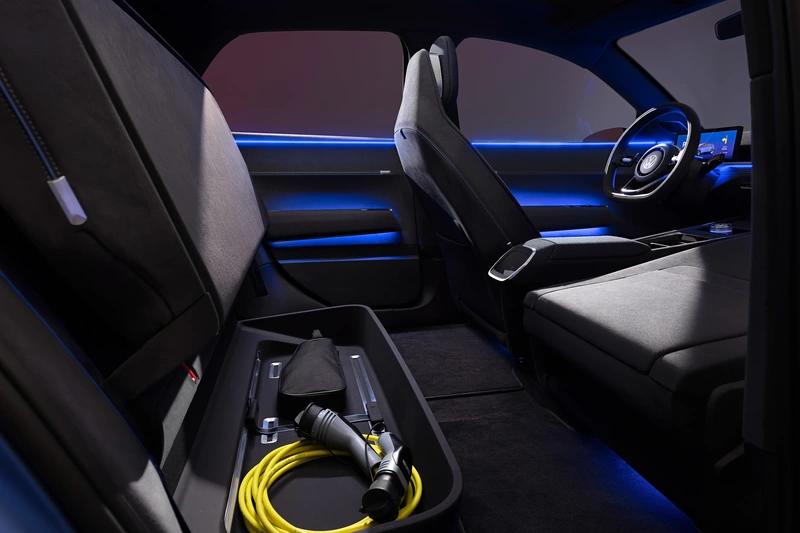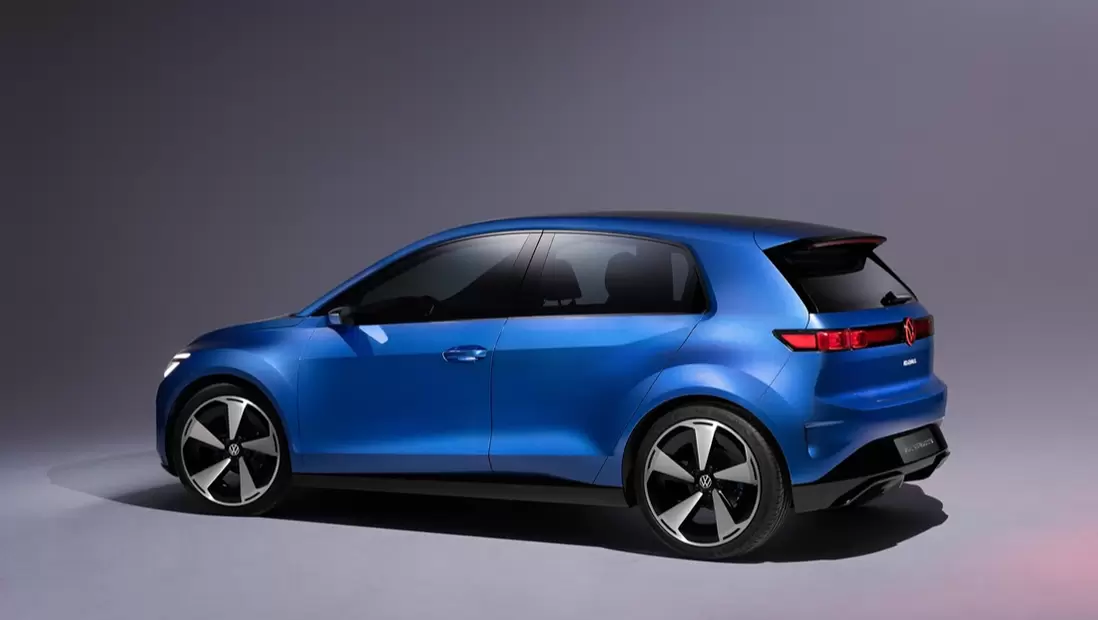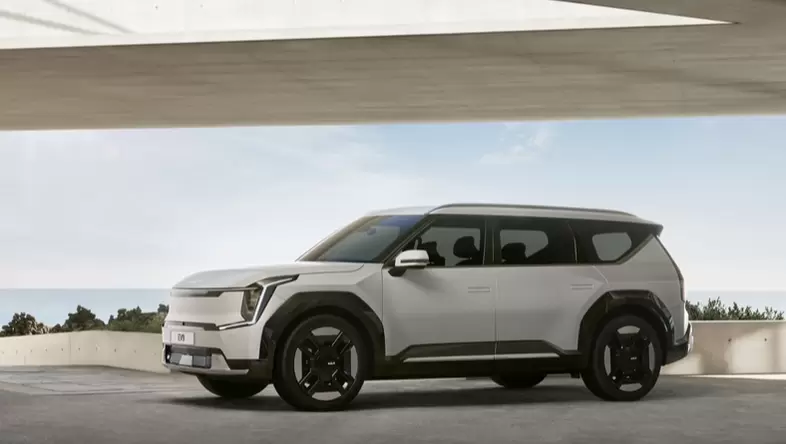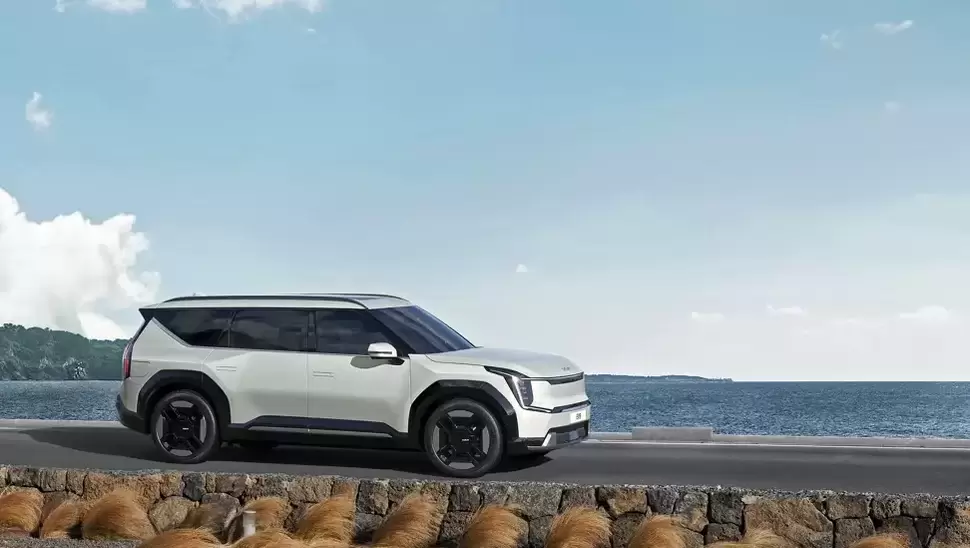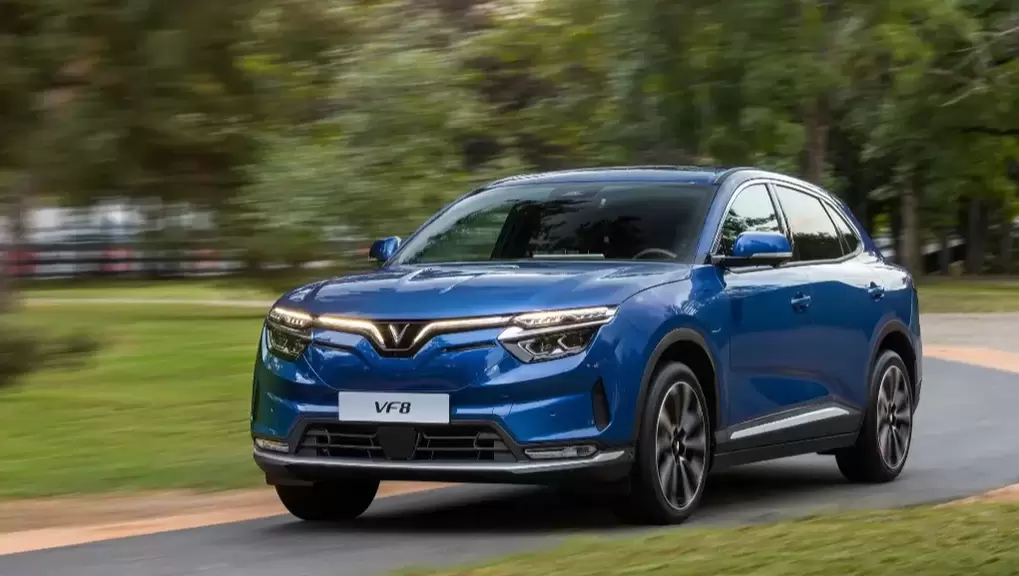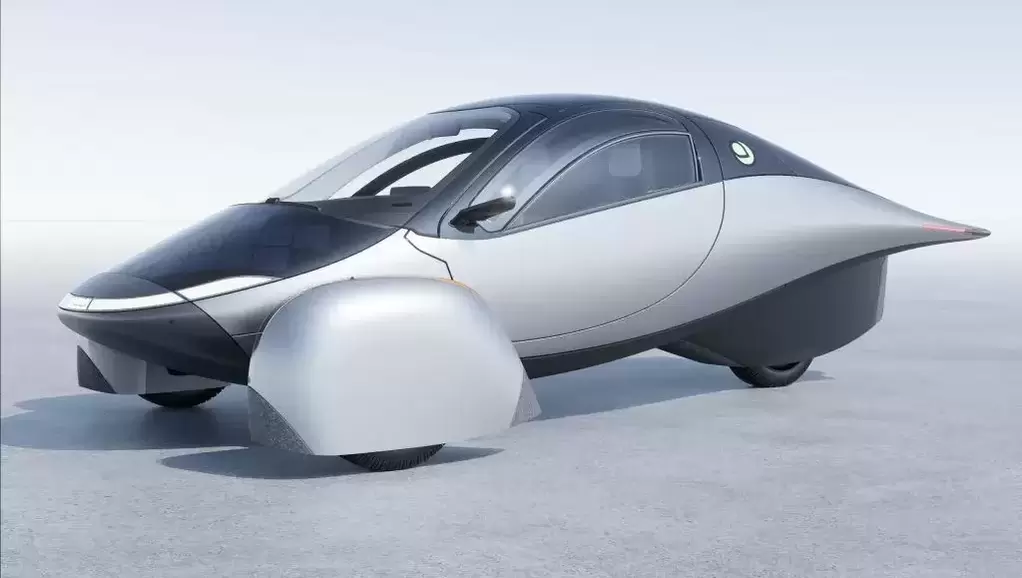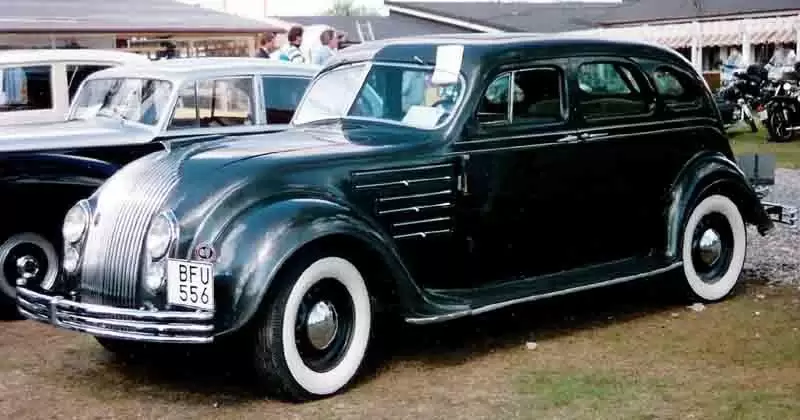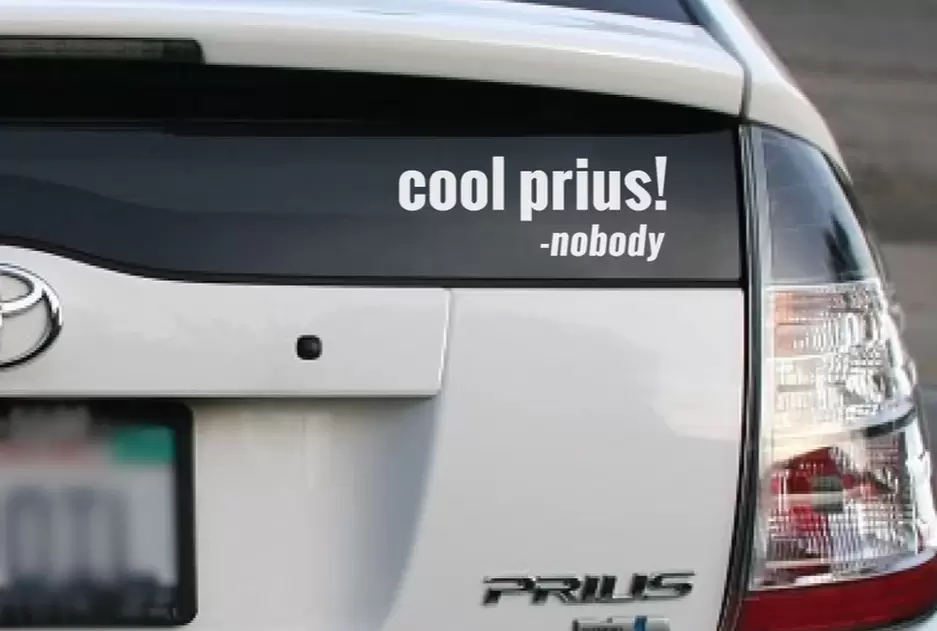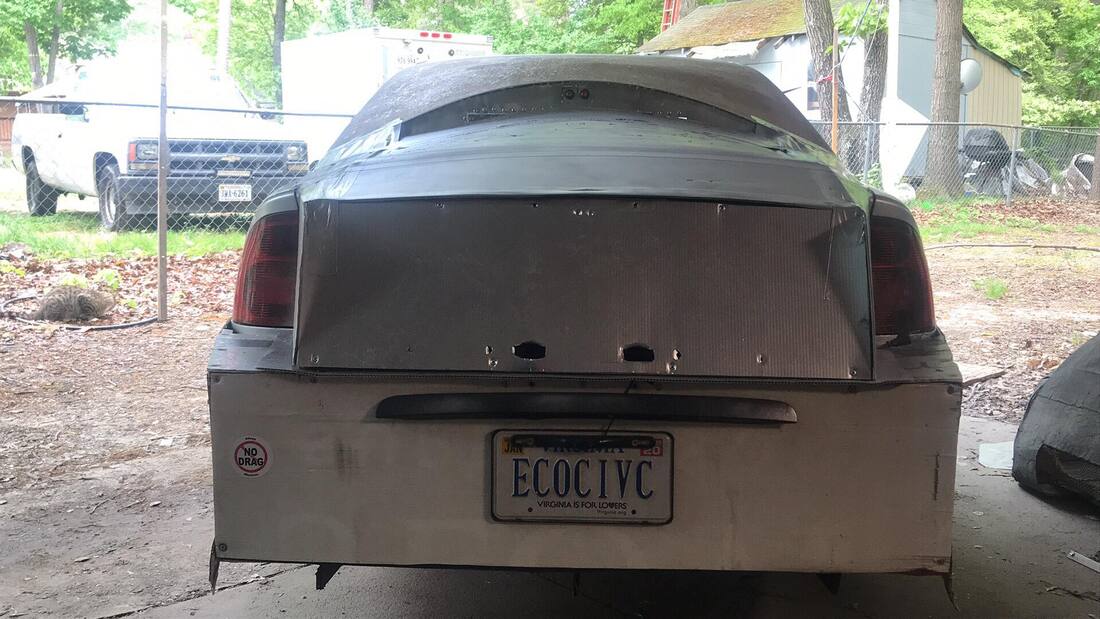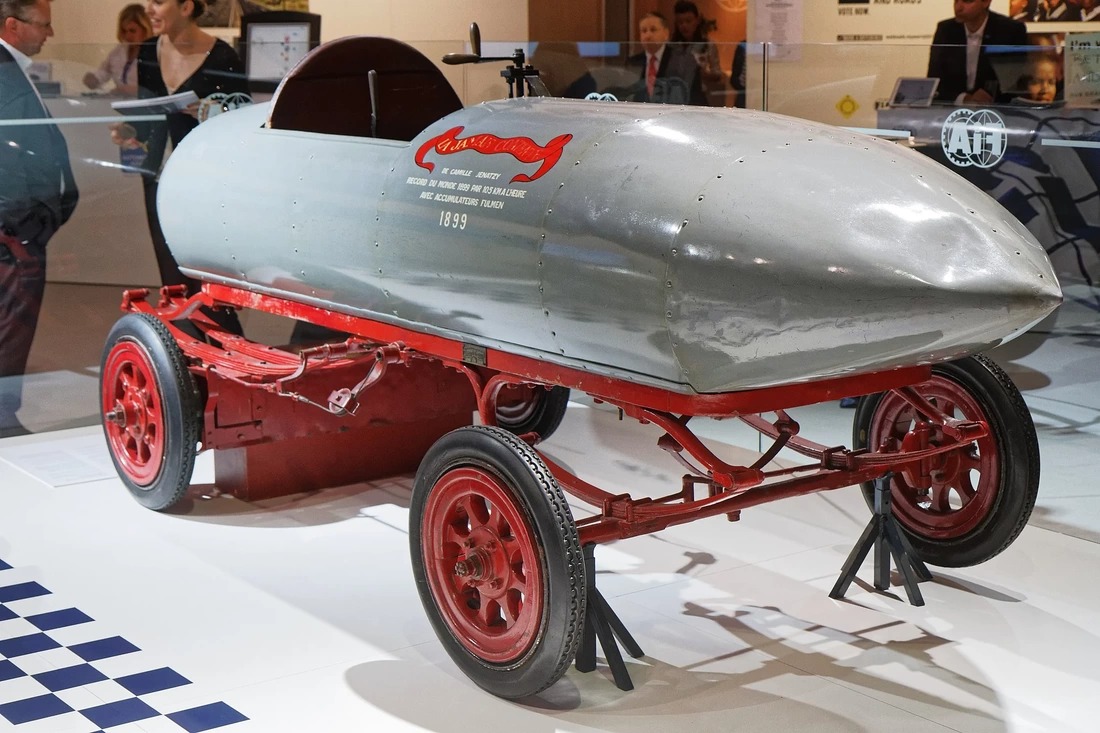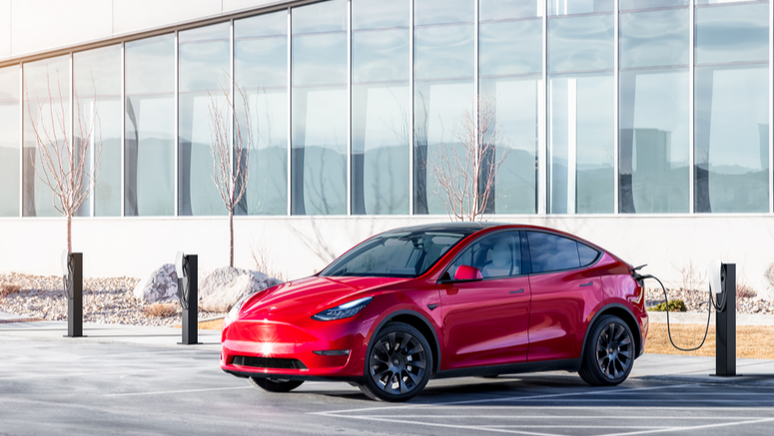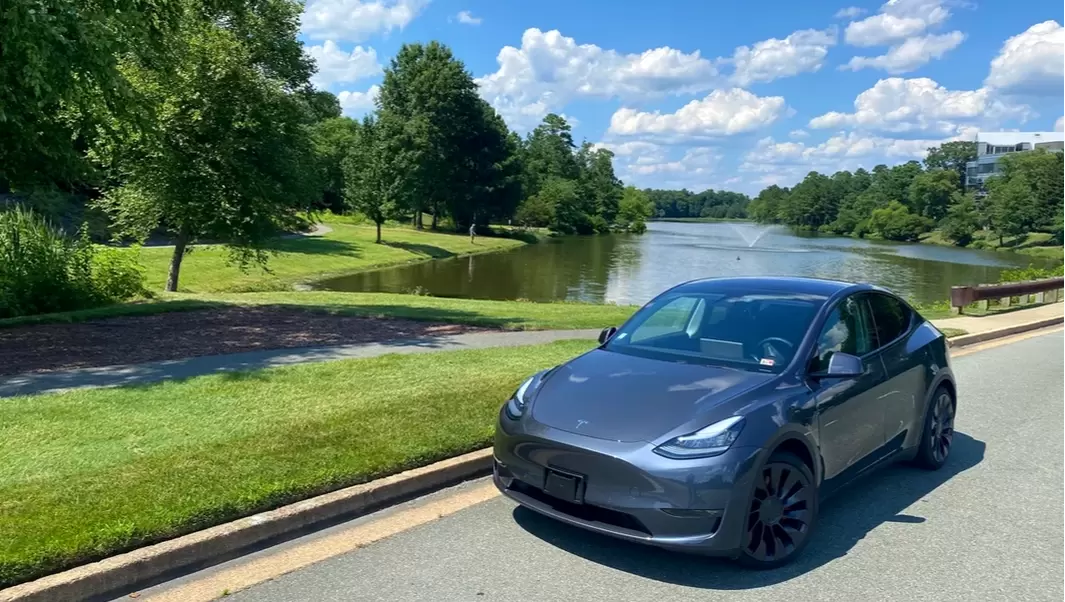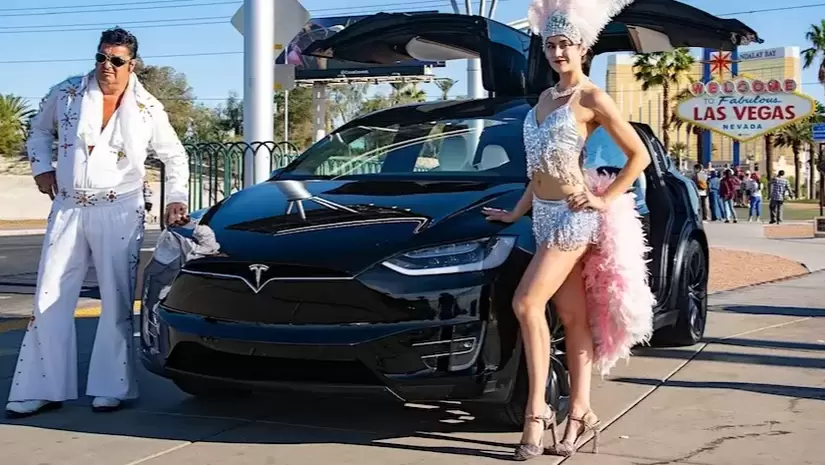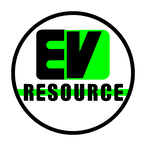|
By Ben Nussbaum, EV Resource Contributor Cutting your fleet operating costs while boosting your company's reputation, and contributing to a healthier environment, is a win-win-win scenario. For fleet operators and business owners, transitioning to alternative fuels isn't just an environmental imperative—it's one of the smartest financial moves to be made. And, while contributing to cleaner air through reduced emissions, and significant cost savings in fueling and maintenance are reason enough for businesses to transition their fleets to alternative fuels, we are also seeing mounting pressure from customers and regulatory agencies demanding businesses shift away from gasoline and diesel emitting vehicles. With all of that in mind, there has never been a better time to explore the benefits of alternative fuels for commercial fleets. But, before we dive in, it's important to define what a commercial fleet is. A commercial fleet is a collection of vehicles owned or leased by businesses to transport goods or provide services. These fleets range from small groups of cars to vast arrays of light-duty to heavy-duty trucks, buses, or specialized vehicles. With the emissions from light-duty, medium-duty, and heavy-duty trucks making up a combined 59.37% of US transportation sector emissions in 2022, the transition to alternative fuels is becoming increasingly important for fleet operators seeking to reduce their environmental impact and operational costs. While there are numerous compelling reasons for fleet operators and business owners to consider transitioning to alternative fuels, there are also unique challenges and considerations to keep in mind. While we see increasing regulatory pressure to reduce vehicle emissions, many businesses are also feeling an increase in customer demands for environmentally responsible business practices. Many businesses are getting ahead of these pressures by establishing Environmental, Social, and Governance (ESG) goals to promote sustainability and reduce their carbon footprint. But, while enhancing public image and adopting "greener" practices is compelling, it would be a tough pill to swallow if it resulted in increased operating costs. Luckily, operating a fleet that is powered from alternative fuels can be a cost-saving business decision, one that could make a big difference on the balance sheet. However, while operating an alternative fuel fleet can save money, there are still challenges that arise related to how to transition. And with so much information (some of from conflicting sources) it's easy to get overwhelmed or confused. So with that in mind, we're going to go through some of the most common challenges and give you actionable solutions that you can implement right now. Sound good? Identifying the Common ChallengesChoosing the right fuel type(s) to work with: There are many different fuel types that make up the "Alternative Fuels" category and they each act as a piece of the larger puzzle. Sometimes a fleet might chose to transition to only one fuel type while others may chose multiple fuel types depending on the use case and application. While the following list isn't the entirety of available options, these four fuel types are the most recommended:
Larger Upfront Investments: While operating costs are usually lower for alternative fueled fleets, the initial cost of purchasing new vehicles and installing necessary infrastructure can be substantial, posing a significant financial barrier. This is a well-known challenge and there are a number of potential subsidies available from federal, state, and local agencies as well as in some cases programs being offered by local electric utilities. Vehicle Availability: The market for alternative fuel vehicles is still developing, and operators may struggle to find vehicles that meet their specific needs and performance requirements in a desired timeframe. It is expected that as the market matures, more vehicles and vehicle choices will be produced to meet the increasing market demands. Fueling Infrastructure: Establishing reliable fueling or charging stations is critical for any fleet and many operators face challenges with limited space for infrastructure on their property and insufficient public refueling infrastructure. This is one of the most significant challenges and as a result has seen a lot of attention to provide solutions. Lack of Knowledge: Many fleet operators don't know where to start with the transition due to the multifaceted nature of the process and general lack of comprehensive plans or guidelines. Navigating the complex landscape of available financial incentives, grants, rebates, and other subsidies can be overwhelming, and missing out on these can make the transition less financially viable. Even the smallest mistakes on applications and forms can have potentially significant consequences or unforseen tax implications. Working with an expert is strongly recommended. Workforce Development: Ensuring drivers and operators are adequately trained on the new vehicle technology is crucial for safety and efficiency, yet this can be a logistical and financial challenge. Fleets that repair or maintain their own vehicles must ensure that technicians are properly trained and have the appropriate certifications. Solutions and RecommendationsWhile the challenges facing businesses and operators looking to transition to alternative fuels can be daunting, there are a number of solutions already available to assist and overcome them. The following recommendations are immediately actionable strategies for businesses and fleet operators looking to gain knowledge and/or take action to transition their fleet to alternative fuels. Comprehensive Planning: Develop a detailed transition plan that includes an analysis of vehicle needs, route requirements, and potential fuel types. A clear plan provides a roadmap for the transition process. Leverage Financial Incentives: Research and apply for grants, subsidies, and incentives to reduce upfront costs. Taking advantage of financial sup[port can make the transition more feasible. Phased Transition: Consider transitioning a percentage of the fleet at a time to manage costs and operational impact. A phased approach allows for adjustments and learning during the process. Investment in Infrastructure: Assess the feasibility of installing fueling or charging stations as needed. Explore on-site fueling or charging or partnerships with public infrastructure providers. Ensuring reliable access to fuel or charging is critical. Training and Development: Invest in workforce training to ensure that in-house maintenance teams are equipped to handle the types of vehicles. Driver Education Programs: Implement comprehensive training programs to educate drivers and operators on the specifics of the new vehicles and fuel types. Well-trained drivers can maximize the efficiency and safety of the new fleet. Consult Experts: Engaging with experts who specialize in fleet transitions can provide invaluable guidance and support. Expert consultation can help avoid common pitfalls, streamline the transition process, and maximize financial incentives. ...Reach out to Fleet Sights for Assistance: For business owners and fleet operators looking to navigate the complexities of transitioning to alternative fuels, expert firms like Fleet Sights can assist with developing a transition plan, identifying and accessing financial incentives, work through vehicle choices, and make recommendations for establishing necessary infrastructure. With Fleet Sights, owners and operators can make informed decisions and ensure a smoother transition process. Transitioning a fleet, no matter how big or small, is not just about compliance or cost savings - it's committing to a healthier environment for our cities and communities and demonstrating leadership in sustainability. By addressing the challenges head-on and leveraging the right resources, business owners and fleet operators can pave the way for a cleaner, more efficient future.
Unless you’ve been living under a rock, you already know that electric vehicles (EVs) are becoming increasingly popular as people look for more sustainable and affordable transportation options. However, as with any new technology, there are certain risks associated with their use. One of the most significant concerns related to EVs is the potential for fires and the difficulties in extinguishing them. The industry is changing rapidly, and what was true just a few years ago has already changed. It's essential for people to be aware of how to reduce the risk of fire, what to do in case of a fire, and what the future holds for this technology and the concern with vehicle fires. Given the vastness of the topic, we have decided to present a three-part series on EV battery fires. The first part will examine what causes them, the second will focus on innovations in the industry to address concerns and improve battery safety, and the final part will look at the future fire risks of electric vehicles, and how we predict the technology will change. Our goal is to clarify misinformation and provide accurate and comprehensive knowledge of the issue to our readers. So, without further ado, let's get right to it!
What causes a fire in an EV battery? There are several reasons that can cause a fire in an EV, but the majority of cases are due to a fault or defect in the battery design, abuse of one or more battery cells (by overheating, crushing, penetration, or overcharging), or as a result of a collision. A fire starts when a damaged or abused battery cell is short-circuited, triggering a chemical reaction that generates toxic and flammable gases, and a significant amount of heat. This heat can lead to a chain reaction called “thermal runaway”. Hot Thermal Runaway works: Electric vehicle battery packs are typically composed of hundreds, if not thousands, of individual battery cells that are densely packed together to occupy as little space as possible. When one or more of the battery cells are damaged or abused, the resulting heat can affect the battery cells adjacent to the first, causing a failure, more heat, and gases in an uncontrollable exothermic chain reaction. As thermal runaway progresses, the separator structure within the battery cell collapses, causing the electrodes to touch. This creates an internal short circuit that generates even more heat. Eventually, the pressure builds up and the gases within the cell are vented, either through blast caps in cylindrical and prismatic cells or by the bursting of pouch cells. During this process, heavy metal dust particles from the cathode can form a dark cloud, which is followed by a white vapor cloud as the gases carry fine droplets of the solvent. As oxygen mixes with the vapor cloud & heat continues to build, the battery cell may ignite, causing surrounding cells to do the same. In rare cases, the vapor cloud can explode without warning. Luckily, this is unlikely to occur. Roughly 11% of the cases that have been reported to Australian research company, EVFireSafe, described a vapor–cloud explosion. How often do EVs catch fire compared to other vehicles?
It is important to note that while fires in electric vehicles are much less common, the biggest risk is when fires happen. In ICE vehicles, fires usually occur during operation of the vehicle and this results in little damage to external property or life as the vehicle is located in an area away from buildings and people. However in an electric vehicle, the fires that do occur are often while the vehicle is parked and charging. This means that damage and destruction of other nearby vehicles or the physical structure (garage, house, parking facility) can occur. In some cases, owners houses have been completely destroyed as a result of a fire starting while they were sleeping. What makes EV fires different from other vehicles? In ICE vehicles, fires are most commonly caused by fuel leaks, electrical system failures, or overheated engines. Naturally, EVs don’t have to worry about most of those causes, but EVs are drastically different from ICE vehicles once a fire is already present. In an ICE vehicle, starving the fire of oxygen will usually extinguish it. However with an electric vehicle, this will not work. That is because most battery cells already contain everything needed to sustain a fire, no outside material or oxygen is needed. The cathode of the battery cell often provides a source of oxygen, and commonly used battery chemicals are highly flammable, even at room temperature. This means that even if you submerge a burning battery cell, it will continue to have a thermal event until the temperature of the cell is reduced significantly. Additionally, the location of EV battery packs (often located under passenger compartment) make accessing the source of the fire very difficult for emergency responders. If a battery cell goes into thermal runaway, this positioning makes it very difficult to direct a stream of water onto the battery pack to cool it. EV fire suppression Eventually, an EV on fire will burn out completely on its own. In some cases though this could take a very long time and secondary ignition is a risk (we’ll get to this more later). The most common method currently used on EV fires is to apply large amounts of water to the vehicle for an extended period of time. This has the effect of cooling the battery cells and bringing them out of a thermal runaway event. This method requires emergency responders to spend hours, and many tens of thousands of gallons, to get the fire under control so that the scene can be cleared. Other methods are to jack one side of the vehicle up to allow better access to the battery pack (not recommended by some manufacturers), and a third common method is to submerge the vehicle entirely in a large container of water. All three of these methods are used to cool the battery pack. Once again, there is no way to starve the fire of oxygen. Secondary ignition Secondary ignition, also known as re-ignition, occurs when nearby battery cells that were damaged in the initial incident or even cells in other modules go into thermal runaway and ignite after a battery cell has already caught fire and been suppressed. Although the original cell does not typically reignite, other cells can ignite at different times, leading to reignition of the EV traction battery. This can happen without warning and in some reports happened more than two months after the initial event. Naturally, this can pose a significant risk if proper precautions were not taken to protect surrounding property. According to some fire agencies around the world, the best practice is to allow the EV traction battery to burn out completely while protecting the surroundings. However, this may not be practical in many cities and towns where road closures and long firefighting operations may not be feasible. In these cases, monitoring the battery for a period of time (15-30 minutes) using thermal imaging cameras and listening for audible signs of thermal runaway, such as popping or hissing noises, is suggested before clearing the vehicle for towing. While EV fires are different from ICE vehicles and require different methods of suppression, they are also incredibly rare. Nonetheless, there is still room for improvement and innovation to make EV batteries even safer.
In the upcoming articles in this series, we will explore various topics such as making safe EV batteries, the role of Battery Management Systems (BMS) in preventing fires, how battery state of charge affects fire risks, and technology being designed and implemented to reduce the risk of battery fires. We will also discuss fireproof EV battery pack designs and what we can expect in the future. Stay tuned for more information on how the industry is working to make EVs even safer! 4/25/2023 GM Ditches Bolt EV/EUV in Favor of More Profitable Ultium Platform, Owners Concerned About Future SupportRead NowThere is no denying that GM has dominated the entry level EV space with the most affordable new electric vehicles on sale. The Bolt EV and EUV with starting MSRP of $26,500 and $27,800 respectively are two of only three fully-electric vehicles under the $30,000 threshold. The prices for each could be even lower when applying the $7,500 EV tax credit. Even though there is strong demand for both vehicles, and they recently celebrated record sales, it just doesn’t look like it will be enough to save them. One reason could be that the company doesn’t know how to, or chooses not to, make the Bolt models profitably. In 2019 CEO Mary Barra gave investors the impression that the Bolt EV wasn’t profitable, at the time saying, "We've talked about the fact that with our next generation of development, we want to make sure we have obtainable, profitable, desirable, and with the appropriate range.” While she didn’t outright speak to the profitability of the model, Daniel Rufiange of auto123.com said the implication was certainly there. It’s no secret that major automakers are struggling to build affordable electric vehicle options, and it looks like GM has finally said enough is enough. On the company’s recent Q1 Investor call, CEO Mary Barra confirmed that Bolt EV and EUV production would end by the end of the year saying, “It’s now time to plan to end Chevy Bolt EV and EUV production, which will happen at the very end of the year.” The company plans to use the capacity at its Orion Township, Michigan, assembly plant to build electric trucks, like the Silverado EV and GMC Sierra EV, starting in 2024. This move by the company is not entirely surprising with many owners and enthusiasts previously predicting the inevitable demise of their favorite EV when GM announced their plans to produce the Equinox EV and Blazer EV. However, those vehicles, built on the more profitable Ultium platform, are expected to have starting MSRPs above $30,000 and $44,000 respectively. While the company has mentioned introducing an electric vehicle with a starting price less than the $30,000 (est.) Equinox, they haven’t given any details or other information about the possibility. This move by the company leaves the American buyer without a solid option for an affordable electric vehicle. Charles Gerena, Lead Organizer of Drive Electric RVA, a chapter of the Electric Vehicle Association, and current Chevy Bolt EV owner was saddened by the news. “As an electric vehicle owner since 2014, a question I often get is what car I would recommend. The Bolt is the best value you can buy today, thanks to the range and capabilities you get for the price,” he said, “Unfortunately GM has decided to abandon the entry level end of the EV market, leaving the Nissan LEAF as the next best choice … and that car’s days are probably also numbered. The automakers are choosing maximum profits rather than giving consumers what they want. What a shame!” Gerena isn’t the only owner with concerns, some are also worried that they won’t be able to rely on GM to provide important support in the future should repairs be needed. Austin Clem, also a Chevy Bolt EV owner, recognizes that GM is focused on developing newer technology. “With the Ultium platform and things like solid state batteries on the horizon, old lithium-ion tech will very quickly be made undesirable,” he said, but added, “Questions can then be posed: How long should Chevrolet manufacture something like replacement Bolt EV traction batteries? Or outdated inverter/motor technology?” GM doesn’t have the best track record regarding their support for EV models once production ends. Parts for Chevy Volt plug-in hybrid models are becoming less and less attainable, and owners of Chevy Spark EVs are struggling as well. Owners of the Chevy Spark EV, GM’s first modern all-electric vehicle, were briefly told last year by the company that they would be unable to have their high voltage battery replaced should it fail. While the company quickly (in a matter of days) made a u-turn in their messaging, owners with failed packs are still waiting on replacements with little guidance from the company on expected timelines. Many of the lucky owners still under the factory 8yr/100,000 mile battery warranty have waited many months, sometimes without a loaner vehicle from the company, until their car was repaired and back on the road. Owners of out-of-warranty Spark EVs have very little hope of any affordable option at all should their packs fail. Currently GM parts departments are showing a cost of $30,000 for a replacement pack, assuming they’d be able to get one at all. Chris Weber, moderator of the Chevy Spark EV Owners Facebook Group and former Spark EV and Bolt EV owner shared an email from the company about the end of production for the Bolt EV and EUV, and quickly had concerns. “I find it interesting, the wording of that email,” she said. While the email does say, “all the support you have come to expect with your Bolt EUV will continue even though we are ending the production of this vehicle” Weber has well founded reservations, pointing out that “They don’t say how long they’ll continue support. Is it going to end tomorrow, next week, next year? I’m not going to hold my breath. Original Bolt EV owners are still upset about not having their batteries replaced [as a part of the battery recall on all Bolt EV and EUV vehicles] yet. GM promised that before the restarted production of the Bolts again… and that hasn’t happened.”
What owners would like to see from GM is assurance that they will be able to have affordable repairs performed in a timely fashion should they need it. Clem said that instead of abandoning their EV models for the next thing, he would rather see “Chevrolet provide modernization options for it’s older EVs.” Clem did, however, quickly acknowledge that it is unlikely the company would take the steps to make that happen. An industry insider, who asked to remain anonymous, also pointed out that “GM either can’t or won’t (I’m going with the latter) upgrade the Bolt skateboard to Ultium. It won’t be hard, they just refuse to. All GM EV’s must be Ultium going forward.” Regardless of what we can expect for the Bolt EV and EUV once production ends, the fact remains that, in a time when the average American buyer wants to see more affordable EV options, not less, GM is making decisions that are directly contrary to what the consumer wants. One of the largest hurdles to increased EV adoption is the inflated prices of current EV options. Without the Bolt EV and EUV, while the company might increase the vehicle profit margin, GM is abandoning the modern consumer in a time when these vehicles are needed, and wanted, most of all.
If you purchase a new all-electric, plug-in hybrid, or fuel cell electric vehicle in 2023 or later, you may be able to claim a federal income tax credit of up to $7,500. However, eligibility for the credit depends on several factors, such as the vehicle's manufacturer suggested retail price (MSRP), where it was assembled, and how its battery components and critical minerals were sourced. Additionally, the credit amount may be subject to reduction based on your modified adjusted gross income (AGI).
Pre-owned vehicles purchased in 2023 or after are eligible for a tax credit of up to $4,000. Changes to this list are ongoing, some qualified manufacturers have yet to submit information on eligible vehicles that meet the requirements for vehicles placed in service on or after April 18, 2023. Please check back for updated information. Federal Tax Credits for Plug-In Electric Vehicles Purchased in 2023 or after
(Vehicle placed into service on or after April 18, 2023)
Last updated 4/23/2023
Earlier this month, NI, previously known as National Instruments, announced the inauguration of its latest Engineering Innovation Center located in Novi, Michigan. The advanced test center is specifically intended to facilitate partnership between automotive manufacturers and suppliers with NI's specialists on their Electric Vehicle (EV) components, including battery cells and packs, and Advanced Driver-Assistance Systems (ADAS) sub-systems. The collaboration aims to enhance the technology's standard and safety in modern-day automobiles. By working together with NI engineers, clients can boost the efficiency of their EV and AV products throughout the entire production process, ensuring that automotive consumers receive the quality and reliability they require.
As Electric Vehicle (EV) powertrain and Advanced Driver-Assistance Systems (ADAS) continue to revolutionize the automotive industry, novel approaches to testing these technologies have become more crucial than ever before. In this rapidly changing landscape, NI recognizes the importance of enabling its clients to work collaboratively with its experts in the Engineering Innovation Center to develop innovative systems that meet the most up-to-date standards. NI's Engineering Innovation Center extends its range of on-site collaboration facilities, with Novi being the latest addition to existing centers in leading global automotive hubs such as Austin, Munich, Shanghai, and Tokyo. Given that the Metro Detroit area has long been considered the heart of the North American automotive industry, Novi's selection as the site for the newest center was a natural choice for NI. “Efficient time to market and test operations are critical to ensuring the acceleration of EV and ADAS programs as they become increasingly complex to test,” said Drita Roggenbuck, senior vice president and general manager of transportation, NI. “This Innovation Center will allow our customers to use the latest solutions from NI to test the rising software and technology going into vehicles to ensure that it is functioning properly at every step of the process, which is key to propelling the automotive industry forward.” Source: NI Press Release As EVs continue to rise in popularity, the charging infrastructure in the US must keep up as demand grows. We can expect to see significant developments in 2023 as more and more companies look to increase the production of electric cars. In this article, we will discuss the current state of public charging, what we can expect in the future and the challenges the industry faces as it rolls out. Current State of the Charging Infrastructure in the US As of January 2023, there were approximately 160,000 public charging stations in the US. With growing demand and pledges by the Biden administration, this figure will definitely grow significantly in the coming years. Here are some critical facts about the current state of charging:
The public charging infrastructure is very much in its infancy, and there is still significant room for growth. As more and more consumers switch to electric vehicles, it will be crucial to continue to expand and improve the charging infrastructure to meet their needs. The Future of Public EV Charging The charging infrastructure is expected to accelerate at a similar rate to the production of EVs. There are a number of charging companies and network operators (like Electrify America, EVgo, Blink, and others) investing billions of dollars into expanding affordable EV charging solutions, and these investments will increase in the coming years. Major automakers such as Ford, General Motors, and Volkswagen have also made major investments, with plans to invest billions more into increasing their production of electric vehicles and have formed partnerships with network operators to improve consumer access to the charging infrastructure.. By having these companies invest in the charging networks, we expect to see more accessibility for EV owners across all 50 states. The efforts to build out the needed charging infrastructure aren’t limited to the private sector either. Recent announcements by the Biden Administration have committed many billions of federal dollars to accelerate the plans already in place. Challenges Facing Charging Infrastructure Development While the development of the charging infrastructure in the US is progressing rapidly, there are still numerous obstacles that need to be overcome before you will have tens of millions of EV’s on the roads. Some of the more pressing challenges include: Cost - It’s no surprise that purchasing and installing charging stations, and operating and maintaining them can be expensive. For some, the price may be too high and this will slow the growth of the industry. Permitting and Regulations - The permitting and regulatory requirements for installing charging stations can vary widely from state to state, which can be a real problem when you are trying to roll out charging points across the whole of the US, adding valuable time and cost to the process. Conclusion In the absence of substantial investment and advancement in the US charging infrastructure, a widespread shift to electric vehicles is uncertain at best. It is essential to have this framework in place before the number of EVs on our roads surges to record level. Encouragingly, automakers, charging providers, and the government are collectively pouring billions of dollars into enhancing the infrastructure nationwide. This is a positive indication for the gradual elimination of internal combustion engine vehicles over the coming decades, ultimately paving the way for a future dominated by electric cars. About the Author
Mullen Automotive, the company that acquired a majority stake in Bollinger Motors last fall, revealed this week that it has successfully reacquired the intellectual property (IP) and North American distribution rights for the Chinese Qiantu K50. Current plans are to assemble and market a localized version of the electric vehicle under the monikers Mullen GT and Mullen GTRS.
The Qiantu K50, which had been mentioned briefly on the EV Resource Podcast, Episode #12, serves as the foundation for Mullen Automotive's new supercar, although few details have been released at this time. We do know that Mullen is targeting a 0-60 time of less than two seconds and a top speed of more than 200 mph. The company has not yet disclosed the battery pack capacity for the US-spec models either, although the Chinese versions are equipped with a 78kWh unit. However, they did previously mention that the vehicle will feature a distinct battery box module, which will include an active liquid cooling and heating management system. “Qiantu has been working on developing electric vehicles since 2013. We are honored to cooperate with Mullen Automotive to bring Qiantu K50 to the U.S. market,” said Chairman Lu of Qiantu Motors. “With its sleek design, excellent driving and handling performance, and impressive full carbon fiber exterior, we believe the Qiantu K50 will be a success in the U.S. EV market, offering users a new level of performance and convenience.” Additionally, Mullen has been making all-electric commercial vans, with deliveries recently to UNC Charlotte. The company also has plans to introduce a compact EV in Europe, based on a Chinese model, as well as the Mullen Five, a luxury crossover. About Mullen: Mullen Automotive (NASDAQ: MULN) is a Southern California-based automotive company building the next generation of electric vehicles (“EVs”) that will be manufactured in its two United States-based assembly plants. Mullen's EV development portfolio includes the Mullen FIVE EV Crossover, Mullen I-GO Commercial Urban Delivery EV, Mullen Commercial Class 1-3 EVs, and Bollinger Motors, which features both the B1 and B2 electric SUV trucks and Class 4-6 commercial offerings. On Sept. 7, 2022, Bollinger Motors became a majority-owned EV truck company of Mullen Automotive, and on Dec. 1, 2022, Mullen closed on the acquisition of all of Electric Last Mile Solutions' (“ELMS”) assets, including all IP and a 650,000-square-foot plant in Mishawaka, Indiana. To learn more about the Company, visit www.MullenUSA.com. Source: Carscoops 4/9/2023 Aptera to Integrate OpenPilot™ Technology for Its Revolutionary Solar Electric VehicleRead NowIn a significant step forward for the company, Aptera Motors has announced that they will have integration of OpenPilot™, a groundbreaking technology for its upcoming solar electric vehicle. The innovative company, known for its dedication to energy efficiency and sustainability, is gearing up to bring their state-of-the-art vehicle to production. With the introduction of OpenPilot™, Aptera is making significant strides in driver assistance and safety features. The Aptera solar electric vehicle has already turned heads with its unique, aerodynamic design and impressive 1,000-mile range. As the world's first "never-charge" electric vehicle powered by the sun, it has the potential to transform the automotive industry. Now, with OpenPilot™, the excitement surrounding Aptera's innovations continues to grow. OpenPilot™ is an open-source autonomous driving software that will be integrated into Aptera's solar electric vehicle. The software offers a suite of advanced safety features, including Adaptive Cruise Control (ACC), Lane Keep Assist (LKA), and Automatic Emergency Braking (AEB). These features not only make driving safer for the vehicle's occupants but also contribute to a greener, more sustainable driving experience. The integration of OpenPilot™ will allow Aptera to provide its customers with a cutting-edge driving experience. The technology enables the vehicle to drive itself under certain conditions, giving drivers more freedom and reducing the stress of long trips. Notably, OpenPilot™ is the only consumer system, besides Tesla, capable of stopping for red lights and stop signs, all while consuming just one-tenth of the power. This autonomy, coupled with the vehicle's solar power capabilities, makes Aptera's offering truly unique in the market. The company's commitment to open-source technology also ensures that their software is continuously updated and improved. By leveraging the power of the open-source community, Aptera can stay at the forefront of technological advancements in the autonomous driving field. This, in turn, guarantees that customers receive the most innovative and reliable driving experience possible. Another key benefit of OpenPilot™ technology is its ability to enhance energy efficiency. The software's advanced algorithms optimize driving patterns, ensuring that the vehicle consumes as little energy as possible. This not only extends the range of Aptera's solar electric vehicle but also reduces its environmental impact. To further encourage innovation and collaboration, Aptera Motors has made its Vehicle Control Unit (VCU) code open-source as well. By opening up their technology to the public, the company hopes to inspire other manufacturers to embrace sustainable practices and accelerate the transition to renewable energy in the automotive industry.
Aptera Motors co-founder and CEO Chris Anthony expressed his enthusiasm for the company's progress: "We believe that OpenPilot and our open-source VCU code will help usher in a new era of advanced, sustainable, and efficient transportation. This is an exciting time for Aptera Motors and for the electric vehicle industry as a whole." The release of OpenPilot™ technology represents a significant milestone for Aptera Motors as they work towards bringing their solar electric vehicle to production. By combining advanced safety features, autonomous driving capabilities, and unparalleled energy efficiency, the company is poised to make a lasting impact on the automotive industry. As Aptera Motors continues to innovate and push the boundaries of sustainable transportation, the excitement surrounding their solar electric vehicle and OpenPilot™ technology is undeniable. The future of electric vehicles just got brighter, and the world is eagerly anticipating the arrival of Aptera's game-changing vehicle. Source: Aptera 4/9/2023 Biden-Harris Administration Drives Affordable EVs Forward, Putting America First in Green Transport RevolutionRead NowIn a bold move to put America first in the green transport revolution, the Biden-Harris Administration has announced a series of new private and public sector investments aimed at making electric vehicles (EVs) more affordable and accessible to the average American. The initiative seeks to create thousands of jobs, boost economic growth, and ensure a cleaner, more sustainable future for the nation.
As part of the ambitious plan, the Biden-Harris Administration is allocating $5 billion over the next five years to expand EV charging infrastructure across the country. This move will significantly improve accessibility and convenience for EV owners while reducing the range anxiety often associated with electric vehicles. The administration is partnering with local governments, utility companies, and private enterprises to ensure that charging stations are installed in strategic locations, providing easy access for EV users. Additionally, the administration has unveiled a new tax credit for American EV manufacturers, designed to incentivize the production of more affordable, cutting-edge electric vehicles. This tax credit will help level the playing field for American manufacturers and promote competition in the global EV market, ultimately benefiting consumers with lower prices and better options. The White House has also announced a $3 billion investment in research and development (R&D) for advanced battery technology. This funding is expected to accelerate breakthroughs in battery performance, reliability, and cost, making electric vehicles even more appealing to consumers. The investment will support the efforts of the Department of Energy's national laboratories, universities, and private sector partners, fostering collaboration and innovation in the EV industry. In a further move to promote domestic production and job creation, the administration is encouraging American companies to take advantage of the Advanced Technology Vehicles Manufacturing (ATVM) loan program. This program offers low-interest loans to help manufacturers retool their facilities and develop advanced technology vehicles. By supporting American manufacturing, the Biden-Harris Administration aims to strengthen the nation's position in the global EV market and create well-paying jobs for American workers. Recognizing the importance of workforce development in the EV industry, the administration is also dedicating $900 million to the creation of a new Community College Consortium for Electric Vehicle Manufacturing. This initiative will provide grants to community colleges, enabling them to develop and expand EV manufacturing training programs. As a result, the next generation of American workers will be better equipped to meet the demands of the growing EV industry. The Biden-Harris Administration's commitment to promoting affordable electric vehicles is a clear indication of their determination to put America first in the green transport revolution. By investing in infrastructure, R&D, and workforce development, the administration is not only ensuring a cleaner, more sustainable future for the nation but also creating thousands of jobs and strengthening the economy. As the world moves towards cleaner, greener modes of transportation, the Biden-Harris Administration's recent announcements are a testament to their dedication to leading the way in the EV revolution. By supporting American innovation and manufacturing, the administration is securing America's place at the forefront of the global green transport movement and ensuring a brighter, more sustainable future for all. Source: White House Statement Ford Raises Prices on the F-150 Lightning Electric Pickup as Demand Surges Ford Motor Company has announced that it will be increasing prices another time for its popular all-electric F-150 Lightning pickup. This move is the latest in a series of price adjustments aimed at mitigating the impact of elevated supply and production expenses. The base price of the F-150 Lightning is now $4,000 more, bringing the entry-level price to $59,974. With this latest price increase, the price has increased almost 50% over when it debuted in 2022.
"Ahead of the next wave of commercial order banks opening mid-April, Ford is adjusting the price of the F-150 Lightning Pro MSRP from $55,974 to $59,974," Ford said, adding that the model remains sold-out for retail customers. As initially reported by Automotive News, this marks the fourth time that Ford has significantly raised the price of the truck. The price increase not only affects the base F-150 Lightning Pro model but also the Lightning Lariat and Platinum models. The Lariat now has a price tag of $75,974, reflecting a $1,500 increase, while the Platinum's price has risen by $1,200 to $98,074. Additionally, all models are subject to a substantial $1,895 destination charge. Despite the price increases, the F-150 Lightning still remains in high demand. The truck boasts impressive performance, an extensive list of standard features, and a spacious, well-equipped crew cab interior. Ford provides the all-wheel-drive vehicle in various models, accompanied by two battery pack options. The maximum range currently attainable is 320 miles on a single charge. The F-150 Lightning is among the three electric pickup trucks presently available on the market, with more expected to arrive in the upcoming years. According to Ford, the price adjustments were made after evaluating the costs of key components such as batteries, metals, and labor. The automaker also mentioned that it is working on expanding its battery production capabilities to help reduce costs in the long term, which could eventually lead to more affordable electric vehicles. The price hike is not unique to Ford, as other automakers have also been grappling with the rising costs of materials and labor in recent times. The automotive industry has been facing supply chain disruptions and chip shortages that have resulted in increased production costs. As a result, many companies are passing these additional expenses onto consumers in the form of price increases. While this latest price increase may come as a disappointment to some, the F-150 Lightning remains an attractive option in the electric pickup market. As the industry continues to evolve and adapt to the challenges of rising costs, it will be interesting to see how Ford and other automakers navigate these hurdles to maintain their competitiveness and appeal to consumers. Ryder System, Inc. has announced that it will add BrightDrop's Zevo 600 and Zevo 400 electric delivery vehicles to its lease and rental fleet. The announcement highlights Ryder's continuous efforts to address the increasing demand for commercial electric vehicles (EVs) in the transportation and logistics industries. The expansion of its offering will allow Ryder's customers to not only test and expand their EV usage but also enhance the driving experience while accelerating their sustainability goals.
“We aim to make fleet electrification as seamless as possible by investing in alternative vehicle solutions to offer sustainable and economic advantages for our customers,” says Tom Havens, president of fleet management solutions for Ryder. “Ryder continues to be at the forefront of identifying advanced and emerging vehicle technology by serving as an extended research and development arm for its customers.” BrightDrop, a General Motors subsidiary, specializes in electric delivery vehicles and associated products and services. The company's electric vehicles are designed to help businesses improve the efficiency and sustainability of their delivery operations. The Zevo 600 and Zevo 400 electric vans boast a range of up to 250 miles on a full charge, and can support a payload of about 2,000 to 3,400 lbs. With Zevo 600’s cargo capacity of over 600 cubic feet and Zevo 400’s cargo capacity of over 400 cubic feet, BrightDrop’s electric vans offer the benefits of an electric powertrain with ample cargo space. Ryder plans to deploy model year 2023 Zevo 600 electric vans in its rental fleet in California, Dallas-Fort Worth, and New York City later this year. The new 2024 Zevo 600 and Zevo 400 models for lease and rental customers are expected to be available as early as summer 2023 and into the first quarter of 2024. Ryder's decision to add BrightDrop's electric vehicles to its fleet is in line with the company's commitment to sustainability. According to Steve Sensing, Ryder's President of Global Supply Chain Solutions, the move is part of the company's broader efforts to "build a more sustainable future." In addition to their environmental benefits, electric vehicles also offer significant cost savings compared to traditional fuel-powered vehicles. With lower fuel and maintenance costs, businesses can reduce their operating expenses and improve their bottom line. “We are excited to focus on providing additional light duty EVs in our Ryder rental and lease fleets in 2023,” adds Carlo Rodriguez, group director for advanced vehicle technology for Ryder. “At Ryder, we want to help customers meet their sustainability, compliance, and operational goals through advanced vehicle technology solutions, and BrightDrop’s electric vans help us do just that.” Ryder's partnership with BrightDrop is a positive development for the transportation industry and for the environment. By adding electric vehicles to its fleet, Ryder is demonstrating its commitment to sustainability while also offering its customers a more efficient and cost-effective transportation solution. As more businesses look to reduce their environmental impact, partnerships like this one will become increasingly important in driving the adoption of electric vehicles and building a more sustainable future. Source: Ryder LG Corporation's subsidiary, LG Innotek, has announced the development of a wireless battery management system (BMS) for electric vehicles (EVs). This new technology is expected to have a significant impact on the EV industry by increasing the range of electric vehicles while downsizing the battery packs, thereby reducing the weight and cost of the vehicles.
The wireless BMS operates by collecting information on individual battery cells and transmitting it wirelessly to the central controller, eliminating the need for wired connections between the cells. This results in a simpler battery pack manufacturing process, reducing the number of components required for the BMS. The wireless BMS is also expected to improve the safety of EVs. The traditional wired BMS system can be vulnerable to damage from heat or vibration, resulting in an electrical short circuit. The wireless system eliminates this risk by reducing the number of connections that can be damaged. Additionally, the wireless BMS can detect abnormalities in individual cells more quickly than traditional wired systems, allowing for earlier detection of potential issues before they become serious problems. This can prevent dangerous situations such as fires or other failures. This wireless BMS technology is not limited just to EVs though, it can also be applied to other battery-powered devices such as drones, power tools, and can even be used in stationary energy storage systems, such as those used in homes or businesses. LG says this new product employs 800V, which is the highest voltage among commercially marketed BMS’s. The company had already succeeded in developing an 800V wired BMS in 2020. Since the charging duration decreases as the voltage increases, domestic and overseas automobile makers tend to adopt 800V as their voltage system for electric vehicles. LG Innotek plans to start mass production of the wireless BMS in 2024. To do so, the company will actively conduct promotional activities targeting major domestic and overseas automobile manufacturers starting the first half of this year, accelerating its move to occupy the relevant market in advance. In addition, the company plans to start the development of an Electric Vehicle Charge Controller (EVCC) wirelessly by leveraging the technology that the company acquired this time. Yoo Byaeng-kuk, Vice President of the Automotive Components & Electronics Business Unit, said, “We will continue to release next-generation automotive electrical components that provide differentiated customer value, and expand our global foothold as a total solution provider in near future.” LG Innotek's wireless battery management system is an exciting innovation that is pushing the electric vehicle industry forward. With its potential to increase range, improve safety, and reduce production costs. By simplifying the manufacturing process and reducing the number of components required, this innovation has the potential to make electric vehicles more affordable. As the electric vehicle market continues to grow, wireless BMS systems, like this from LG Innoteck, will undoubtedly play a critical role in shaping the future of the industry. Source: LG Corp Extreme E today has revealed the specific location of their next race in Scotland. The Hydro X-Prix weekend will take place at the former Glenmuckloch opencast coal mine site in Dumfries and Galloway on May 13th and 14th.
The former Glenmuckloch coal mine site, which is set to host Extreme E's Hydro X Prix, offers an ideal natural arena to demonstrate the necessary shift from fossil fuels to clean energy futures, which is the primary focus of the off-road rally series. “Extreme E is a unique sport for purpose racing series. We are thrilled to be headed to Scotland in May for the Hydro X Prix, and we could not have found a more perfect racing site than the former Glenmuckloch coal mine," said Extreme E Founder and CEO, Alejandro Agag. "Not only will this site provide one of the most dramatic and extreme race courses we have seen in our global journey, it will tell a poignant story about transition and the changing of courses that the energy industry and communities must all take if we are to succeed in the fight against climate change.” Extreme E is a pioneering electric motorsport platform that provides a thrilling wheel-to-wheel racing format. It is also the first series to offer a gender-equal racing platform where male and female drivers compete equally for success. This unique feature sets an inspiring example for the motorsport industry and promotes gender equality in sports. Catie Munnings, Driver for the Andretti Altawkilat Extreme E team, is excited about the series return to the UK saying, "There’s always something unique about every Extreme E course but racing in a location like this which is close to home will be something special for me and the team. I've heard the track will be a combination of both fast sections on grass as well as drops into a quarry which will be really interesting to see. The Andretti Altawkilat Extreme E team have a lot to build on and we are more hungry than ever to achieve a result that we deserve.” In addition to the racing action, Extreme E also uses their 'Legacy Programme' to bring positive and lasting change to the local communities that host their events. For the Hydro X-Prix, Extreme E is launching a community-led project aimed at mitigating the effects of climate change on the local salmon stocks. The multi-stage project will involve the re-planting of over a thousand trees and the use of innovative technologies to monitor the habitat. Through these efforts, Extreme E will drive a long-term transformation of the River Nith area, ensuring the preservation of salmon stocks critical to the local industry. This project is a testament to Extreme E's commitment to promoting sustainable practices and protecting the environment for future generations and has been welcomed by Anna Gergusson, Estate Director of Buccleuch's Queensbury Estate, home of Glenmuckloch. “Hosting Extreme E is a wonderful opportunity for Buccleuch and the local community. Their commitment to the environment flows through everything they do, and using the sport to highlight local and international nature-based projects enables engagement on so many levels. For me, personally, recognising gender equality sends an incredibly positive message, which is important to recognise.” The racing action will be best viewed live on STV and ITV, in the UK, over both Saturday 13 and Sunday 14 May to enable the best views. Outside of the UK, please visit here for broadcaster details. To learn more about Extreme E, visit: www.Extreme-E.com It's a start, but there's a long way to go yet... As the automotive industry continues to recover from the pandemic and other supply chain disruptions, some trends are becoming clearer. One of them is the decline of internal combustion engine (ICE) vehicle sales, as more and more consumers opt for electric, plug-in hybrid, and fuel cell vehicles. This shift is driven by a combination of factors, including environmental concerns, regulatory pressures, technological advancements, and changing consumer preferences. A report from Bloomberg New Energy Finance says, "it’s becoming clearer that sales of internal combustion vehicles are unlikely to ever return to pre-pandemic levels. During the height of the market in 2017, a total of 86 million ICE vehicles were sold, which includes hybrids such as the Toyota Prius as they are only gasoline-powered. At the time, electric and plug-in hybrid models made up only a small fraction of the market, with a combined total of just over 1 million vehicles sold.
However, last year the landscape of the automotive industry looked markedly dissimilar. Sales of ICE vehicles had dropped by almost 20% from their peak, to 69 million, while plug-in vehicles had surged to 10.4 million. That being said, even if plug-in hybrid vehicles were added to the ICE category, the overall picture remains largely unchanged. BNEF expects "the global combustion vehicle fleet to be relatively steady for the next three years before starting to decline in earnest from 2026 onward as the EV fleet swells." Nonetheless, what ultimately counts for oil demand is the replacement of existing vehicles with new ones, and that's why the peak of oil consumption is expected to occur around 2027. This projection is significantly earlier than what was anticipated just a few years ago in 2016, when estimates suggested that the year of peak oil consumption would be 2036. However, more recently, the International Energy Agency has predicted that global fossil fuel demand will reach its peak within this decade. IEA Executive Director Fatih Birol said, “Even with today’s policy settings, the energy world is shifting dramatically before our eyes. Government responses around the world promise to make this a historic and definitive turning point towards a cleaner, more affordable and more secure energy system.” You can read the full World Energy Outlook report from 2022 here. 7-Eleven has announced it will be jumping into the EV charging game this past Thursday (3/16/23). With the introduction of 7Charge, 7-Eleven plans to establish one of the largest and most compatible fast-charging networks for electric vehicles of any retailer in North America. The service is currently operational at various locations in Florida, Texas, Colorado, and California, offering fast-charging services to customers through use with their proprietary 7Charge app. The charging stations will be equipped with both CHAdeMO and CCS fast-charging connectors and will be notably excluding Tesla's NACS connector. As a result, Tesla vehicles will need to use an adapter if they want to utilize the network. Current stations shown on the 7Charge app are listed as providing a peak rate of 90 kW. According to the company, pricing for the 7Charge network is determined by either energy consumed (in kWh) or time spent charging, depending on the regulations in the state where the chargers are located. Similar to other EV charging networks, customers are requested to move their vehicles after charging is complete, and may be subject to additional fees for prolonged use at certain locations. It will be interesting to see how consumers take advantage of this offering. With most trips to 7-Eleven lasting less than 10 minutes, will customers take longer and wait for their EV to charge more... or will they leave when they're finished in-store?
Blink Charging Co., a prominent manufacturer, owner, operator, and supplier of electric vehicle (EV) charging equipment and services, shared in a press release that it has secured an Indefinite Delivery/Indefinite Quantity (IDIQ) agreement with the United States Postal Service (USPS). The contract permits Blink to provide up to 41,500 EV charging units to assist in the development of EV charging infrastructure for the USPS as part of its vehicle electrification strategy.
“We are honored to be selected by the US Postal Service to provide our reliable and advanced EV charging stations and ancillary network services for their growing fleet of electric vehicles and we applaud their efforts to modernize and make the move towards a sustainable and efficient electric fleet,” said Michael D. Farkas, Founder and Chief Executive Officer of Blink Charging. “The Postal Service’s recent announcement of purchasing more EVs and building the necessary charging infrastructure is another step in developing a complete transition in going electric. This move towards electrification sets a precedent that we are hopeful all fleet owners will follow.” Blink will provide the USPS its Series 7 dual-port charger, which can deliver up to 80 amps of power at each port. These Level 2 AC chargers are capable of charging two vehicles at the same time using the Universal J1772 connector, at a rate of 19.2kW. The NEMA 3R outdoor-rated enclosure permits flexible installation either inside or outside, and the charger's compact form factor enables optimal placement with wall or pedestal mounting options. The standard 18-foot charging cables (upgradeable to 25 feet) can extend around any vehicle or between parking spots, offering greater flexibility for postal sites. This substantial order by the USPS marks another positive development for Blink Charging and the postal service as they move to electrify as much as 50% of their fleet of vehicles. The race to build the best affordable EV is heating up and with the unveiling of the ID.2 Concept vehicle, Volkswagen is positioned to absolutely dominate... in Europe. When it comes to market in 2025 VW says that it will sell for under 25,000 euros. VW says the ID.2 is "spacious like a Golf, affordable like a Polo," and if it holds to that price point, it should be their best selling EV ever. Styling According to reports, the concept design for the ID.2 was developed in just eight weeks after Volkswagen appointed a new design boss who was not fond of the original "ID Life" concept from 2021. With the ID.2, VW's design team aimed to create a car that has a more traditional appearance, one that is closer in style to the brand's gasoline-powered cars compared to other ID models. And that is a good thing. VW aims to make the ID.2 appealing to a broad audience. While the design of the car is not particularly remarkable, it is also unlikely to put off potential buyers. According to Andreas Mindt, Head of Design at Volkswagen Passenger Cars, “The ID. 2all gives a preview of the new design language of Volkswagen, which is based on the three pillars stability, likeability and excitement.” The ID.2 features a newly interpreted C-pillar design, which pays homage to the first Golf and is a key element of the car's new design language. Several design features that set it apart include a welcoming front end that features a full-width LED light bar, bulging wheel arches filled with 20-inch wheels on 225/40 R20 tires, giving the car an imposing appearance. Drivetrain, Range, Performance, Charging Built on the same modular electric drive (MEB) platform as the ID.3, ID.4, and others, the ID.2 is distinct in that it will be the first to be offered with front-wheel drive. Kai Grünitz, Member of the Brand Board of Management responsible for Technical Development said the company is "exploiting the great flexibility offered by our modular electric drive (MEB) platform and will set new standards in terms of technology and everyday usability with the MEB Entry platform.” Volkswagen says that the ID.2 will offer a range of up to 450 kilometers (279 miles) from its battery pack, although the exact capacity has not been disclosed yet. This is higher than any variant of the ID.3. The power output of the vehicle is also higher than that of the ID.3, with VW stating that it will provide 166 kW (226 horsepower), representing an increase of approximately 10%. Although the exact charging speed has not been specified, VW that the battery can be charged from 10 to 80 percent in approximately 20 minutes. This puts it in the same league as some of the fastest-charging electric vehicles currently available, such as the Hyundai Ioniq 5, Kia EV6, and newer Tesla models. Interior Design Last year, Volkswagen announced that it would be incorporating physical buttons back into their ID vehicles due to customer complaints about the touch controls. The upcoming ID.2 will fully embrace this trend, featuring actual buttons on the steering wheel and additional physical controls on the center console for various functions, including climate control. The company claims that the ID.2 will provide the same interior room for passengers as the Golf, all within the same footprint as the Polo. Although it won't be as spacious as the ID.3, the ID.2 is expected to use its space more efficiently. Despite being Polo-sized, the ID.2 will offer a cargo volume of 490 liters, which can be expanded to 1,330 liters by folding down the rear seats. If VW achieves the specifications they've shared about the ID.2 Concept, it will be a massive success for the brand. Unfortunately, there has been no talk yet about bringing it to North America, something that is a disappointment for many who have been looking for an affordable EV that isn't a Chevy or Nissan.
What do you think of the concept? Leave a comment below!
Kia has unveiled the exterior and interior design of its highly anticipated flagship SUV, the Kia EV9. The first three-row electric SUV from the brand, the EV9 boasts bold styling and sophisticated elegance both inside and out. A "digital global premiere" is expected later in March 2023 where the company will share product details and pricing. "We are thrilled to introduce the Kia EV9, the first dedicated electric vehicle from Kia built on the E-GMP platform," said Kia President and CEO, Ho Sung Song. "The EV9 represents the brand's commitment to sustainable transportation and reinforces Kia's position as a leader in the EV market." Exterior Design The EV9 features a sleek and modern design that's sure to turn heads. The exterior of the SUV is both bold and sophisticated, with a unique front grille and dynamic LED lighting. The SUV boasts several distinctive features, such as the innovative triangular tail lights, sleek flush door handles, and geometric aero-style rims. Additionally, the front LEDs feature tessellated designs and create a dynamic "Digital Tiger Face," providing a unique visual experience. "The Kia EV9 breaks new ground, aiming to redefine standards for design, connectivity, usability and environmental responsibility," said Karim Habib, Executive Vice President and Head of Kia Global Design Center. "The Kia EV9 offers customers an exceptionally high-quality proposition and a fresh EV perspective in the family SUV sector. This new vehicle typology provides instinctive experiences and excellent comfort for not just the driver, but all occupants, through innovative use of space, technology and design." Interior Design The EV9's interior takes inspiration from the Concept EV9, which boasted flexible seating configurations. The production model retains some of that functionality, as evidenced by photos showcasing a center row of swiveling seats for its six-seater version. These seats can rotate to face the rear seats for face-to-face interactions, or toward the doors for ease of access. “The Kia EV9 offers customers an exceptionally high-quality proposition and a fresh EV perspective in the family SUV sector,” EVP and head of Kia Global Design Center Karim Habib states in a press release. With the Rivian R1S, Mercedes EQS SUV, and Tesla Model X and Y being the only three-row electric SUVs available, all with relatively high starting prices (except the Model Y), the Kia EV9 may offer an affordable alternative. The Kia EV9's driver experience features a pair of 12.3-inch touchscreens arranged side-by-side. In addition, a 5-inch screen segment is located in the center for quick access to climate controls and other functions.
The complete specifications, battery range, pricing, and availability of the production EV9 have not been disclosed by Kia yet. However, the company has announced that all information will be made public later this month in their "digital global premiere".
Mississippi Governor Phil Bryant has signed a new law that bans direct in-person sales of electric cars, requiring instead that all sales go through traditional dealerships. The move means that electric car manufacturers such as Tesla, Rivian, Lucid, and others will no longer be able to sell their vehicles directly to consumers in Mississippi.
While the new law was opposed by some Republican lawmakers in the state who called for a veto, it ultimately passed with overwhelming support from both Republican and Democratic legislators. Supporters of the law argue that it will protect consumers by ensuring that all car sales are subject to the same regulations and consumer protections as traditional dealerships.
Under the new law in Mississippi, carmakers are allowed to make direct sales in two ways. Firstly, through online sales as H.B. 401 doesn't regulate digital storefronts. Secondly, companies that own only one dealership and have held a dealer license since August 2021, and exclusively sell electric vehicles, can continue their business unimpeded. This exception seems to apply to only one establishment, the Tesla store in Brandon, Mississippi.
Critics of the law, however, argue that it is a protectionist measure designed to prop up traditional dealerships and limit competition, and that it will ultimately harm consumers by limiting their choices and increasing prices. Mississippi is not the only state to have banned direct sales of electric cars; other states, including Texas and Michigan, have similar laws in place. Electric car manufacturers have fought against these laws in court, arguing that they are unconstitutional and anti-competitive, but so far they have been unsuccessful in overturning them. The debate over direct sales of electric cars is likely to continue, as more and more consumers turn to electric vehicles and traditional dealerships seek to protect their market share. As the electric car industry continues to grow, it remains to be seen whether states will continue to ban direct sales or whether they will embrace new models of car sales that offer consumers more choice and competition. It is important to note that laws and regulations surrounding electric car sales can change over time as political and economic factors shift. If you have questions or concerns about electric car sales in your state, it is best to consult with local experts or government officials for the most up-to-date information. More troubling news for Vietnamese electric vehicle maker, VinFast, as they have lost three high-ranking executives responsible for sales and customer service, according to reports on Friday. The departures follow a series of recent executive changes for the ambitious automaker from Vietnam, which have come in the wake of the delayed and expensive introduction of VinFast's inaugural EVs in California, marking the company's first entry into an overseas market.
VinFast issued a statement to Reuters, stating that Gareth Dunsmore, the deputy chief executive for global sales and marketing, had resigned "due to personal reasons, and we respect his decision." The company reported that two other executives based in the U.S. had departed due to "changes in the management model and specific business requirements." These executives are Greg Tebbutt, the former chief marketing officer, and Craig Westbrook, the former chief service officer. Dunsmore, Tebbutt, and Westbrook have not made any comments regarding their departures. VinFast, which is a subsidiary of Vingroup, shipped 999 units of its VF8 SUVs to California from Vietnam in November. However, the company later disclosed that the car's battery range was lower than previously advertised to buyers, and it took until earlier this month to get the vehicles ready for delivery to customers. VinFast has been marketing the initial batch of VF8s, rebranded as the City Edition to account for the lower battery range, for lease in California. The company anticipates shipping a higher-range version of the VF8 later this year. The company couldn't be choosing a more difficult time to enter the U.S. EV market. Established rivals, particularly Tesla, Ford, and GM, have reduced prices and are preparing to unveil a range of new models. Other EV start-ups are showing signs of challenging times as well, including Lucid, Sono Motors, Arcimoto, and electric truck manufacturer Nikola, seeing declining orders, higher interest rates, and increased competition. For VinFast, these recent departures are only the latest in a string of executive turnovers. In February, VinFast merged its operations in the U.S. and Canada and cut approximately 80 jobs, including former U.S. Chief Financial Officer Rodney Haynes. Last June, VinFast reported that it had terminated its agreement with Emmanuel Bret, the former deputy CEO for global sales before recently departed Dunsmore. Three additional senior executives departed at that time. Huy Chieu, a former General Motors engineer who was promoted in June to lead EV product development, resigned in December before the company's first cars were delivered to U.S. customers. Since its founding in 2017, VinFast has undergone three changes in CEOs. The automaker, which commenced production in 2019, intends to construct a factory in North Carolina and has submitted an application to go public through an initial public offering (IPO) in the United States. According to its IPO registration statement, VinFast incurred a loss of $2.1 billion in 2022 on revenue of $634 million. 3/12/2023 The Importance of Aero Efficiency in EVs: Lessons from Revolutionary Vehicle DesignsRead NowSometimes it takes time for people to appreciate truly innovative designs. Just as many of the greatest composers and visual artists of all time were not fully appreciated during their lifetimes, the most aerodynamic vehicles were not always popular with buyers either. Streamlining was initially employed by Land Speed Record (LSR) racers as a means of reducing air resistance and achieving faster speeds. This approach gained popularity in the early 20th century and culminated in 1899 when the electric-powered ‘La Jamais Contente’ (The Never Satisfied) became the first automobile to break the 100 km/h barrier. As engines became more powerful and cars could more easily achieve highway speeds, the focus of aerodynamic design shifted towards improving fuel efficiency. Although enhancing a vehicle's aerodynamic efficiency is important for various reasons, the final outcome does not always produce a design that is favored by potential buyers of the vehicle. One really good example of this is with the 1934 Chrysler Airflow, the first American car to be designed aerodynamically in a wind tunnel. This design improved the high speed stability and the efficiency of the vehicle was improved, but it didn't sell very well. Buyers weren’t impressed with the radical shape and looks of the car. Since then, several cars have focused on aero engineering, and many have failed to succeed. One of them was the General Motors EV1, a lease-only experimental electric vehicle from the 1990s with a remarkable drag coefficient of 0.19, resembling a UFO. The car's entire production run was repurchased and destroyed. The 2013 Volkswagen XL1, a diesel-powered hybrid with carbon-fiber construction and butterfly-wing doors that returned 260 MPG, was produced in a limited run of only 250. Perhaps the Toyota Prius is the most successful example of an aero-first design, as it is highly popular, efficient, and its exterior is also often subject to harsh criticism. In today’s automotive world, the focus on aerodynamics is evident in nearly every vehicle on the road. From the overall shape of the vehicle to the design of the wheel wells, manufacturers are focused on making their vehicles more efficient to meet ever increasing government standards from around the world. Owners themselves have been doing this for years as well. These owners, called “ecomodders”, have seen really impressive results. One notable example of an owner modifying their vehicle for maximum efficiency was the ‘EcoCivic’ project by none other than yours truly. My project was based on a 2003 Honda Civic and I was working towards a goal of achieving more than 100 mpg. While falling short of this goal, the project achieved an impressive 83 miles per gallon on the highway, largely due to the modifications made to the car's aerodynamics. While modifying the aerodynamics of the Civic yielded the most significant improvements, it made the car look really weird, and not in a “good weird” way. Nevertheless, the EcoCivic project demonstrated the potential for significant improvements in fuel efficiency through careful modifications to the vehicle's design. The Importance of Aerodynamic Efficiency with EVs As electric vehicles (EVs) become more prevalent on our roads, the importance of aerodynamics in their design is increasingly emphasized. Unlike traditional gasoline-powered vehicles, EVs rely solely on electric motors for propulsion and are powered by batteries, which means that any inefficiency in their design can have a significant impact on their range and overall performance. One of the biggest challenges faced by EV manufacturers is to increase the range of their vehicles while keeping the battery size and weight in check. Aerodynamics plays a crucial role in achieving this goal by reducing the energy required to move the car through the air. A more streamlined vehicle design means less air resistance, which translates to less power needed to maintain speed and less energy wasted as heat. In other words, the more aerodynamic an EV is, the smaller the battery needs to be. A great example of an EV that is horribly efficient would be the GMC Hummer EV. In order to achieve a range similar to competitors, the Hummer EV is fitted with a battery that is twice the size of many other long-range EVs, and as heavy as a smaller car itself weighing in at more than 2,000 lbs! Moreover, aerodynamic design also affects the efficiency of the EV's regenerative braking system. Regenerative braking, a feature common in many EVs, converts kinetic energy into electrical energy, which can then be stored in the battery for later use. However, the efficiency of this process depends on how much kinetic energy can be recovered during braking, which is influenced by the aerodynamic design of the vehicle. A poorly designed vehicle with high air resistance will experience more friction during braking, resulting in less energy recovered. Aerodynamic Design Elements in EVs One key design element in electric vehicles is the flat underbody. This helps to reduce drag by smoothing out the air flow underneath the vehicle, which is especially important at high speeds. Another important feature is smooth wheel covers, which help to reduce turbulence around the wheels and improve overall aerodynamics. Active grille shutters are also becoming more common in electric vehicles. These shutters can open and close automatically to control the flow of air through the front of the vehicle, improving aerodynamics and reducing drag. Other design elements that are important in electric vehicles include tapered rear ends, flush door handles, and well-designed side mirrors. Many electric vehicles on the market today have excellent aerodynamic design, with some models achieving industry-leading levels of efficiency. For example, the Tesla Model S has a sleek and aerodynamic shape with a low coefficient of drag (Cd) of 0.208, making it one of the most aerodynamically efficient production cars ever made. While the Model S, and most other popular electric vehicles have shown to implement significant aerodynamic improvements to achieve greater range and efficiency, this is quickly becoming the norm in the industry and there aren’t too many manufactures that are truly pushing the boundaries of possibility. One standout exception is the three-wheeled solar electric vehicle from Aptera. Pushing the Boundaries (Again) Aptera, a California-based start-up recently resurrected in 2019, is set apart from most EV makers in their unwavering commitment to aero efficiency to increase speed, range, and overall efficiency performance. Aptera's flagship model is a three-wheeled EV that looks more like a futuristic airplane without wings than a car. In fact, the name ‘Aptera’ comes from the ancient Greek word ‘apteron,’ which means ‘wingless.” The body shape is characterized by a teardrop profile that minimizes drag, while the rear wheel is enclosed to further reduce turbulence. The vehicle also has a flat underbody and a narrow frontal area, which contribute to its exceptional aerodynamics. According to Aptera, versions of the vehicle will have a drag coefficient of only .13 and, when paired with the largest battery pack, will achieve a range of up to 1,000 miles on a single charge, which is more than double most of the current longest-range EVs on the market (the Lucid Air being the exception with more than 500 miles of range). The vehicle can also accelerate from 0 to 60 miles per hour in as little as 3.5 seconds, making it a formidable performer despite its unconventional design. Although Aptera's focus on aerodynamic efficiency is commendable, it's important to acknowledge that, like other revolutionary vehicles before it, some potential buyers may find its teardrop shape unusual or unappealing. However, this shouldn't detract from the fact that the innovative design features of the Aptera are likely to influence the industry as a whole. It's highly probable that we will see an increase in future electric vehicles with exceptional aerodynamic efficiency, which will ultimately benefit all consumers. It is clear that vehicle aerodynamics has had a significant impact on the automotive industry throughout its history. While pushing the boundaries of what is possible in any given time period can lead to revolutionary designs, it can also have negative effects on the marketability of a vehicle. Nonetheless, it is important to recognize the crucial role that these vehicles have played in advancing the industry as a whole. By constantly pushing the limits of aerodynamics, engineers and designers have been able to create more efficient and faster vehicles that continue to shape the future of transportation. As we move forward, it is exciting to think about the possibilities that await us in the world of vehicle aerodynamics. Interested in having an Aptera in your driveway? Use this referral link for $30 off your Aptera pre-order! 3/12/2023 Never Satisfied: The Remarkable Story of 'La Jamais Contente', the Electric Car that Revolutionized RacingRead Now
Few cars have had such a profound impact on automotive history, yet are overlooked today's world. Today we're going to celebrate one of these forgotten legends: 'La Jamais Contente'.
'La Jamais Contente', which means "The Never Satisfied" in French, built in 1899 by Belgian race car driver Camille Jenatzy, was a pioneering electric car. Not only was the car ahead of its time in terms of technology and design, it also broke the land speed record, becoming the first vehicle to exceed 100 km/h (62 mph) and set a new standard for automotive engineering. 'La Jamais Contente's achievement played a key role in the development and popularization of electric cars, as well as the advancement of electric motors and batteries. Development and Design Jenatzy's innovative design featured a lightweight chassis made from chrome-nickel steel, which was powered by two Fulmen electric motors. These motors drew their power from Fulmen batteries, which were designed to deliver high levels of energy output with low internal resistance, something that was not common at the time. To reduce wind resistance, the car was given a sleek, bullet-shaped body, made from aluminum. The design was so aerodynamic that it was able to reach top speeds that had never been seen before in a land vehicle. Record Breaking Achievement 'La Jamais Contente' achieved legendary status in the world of automotive history by setting a new land speed record in April 1899. The car was driven by Camille Jenatzy himself, who pushed the car to its limits on the roads of Achères, France. With its advanced electric powertrain (for the time) and aerodynamic design, La Jamais Contente achieved a top speed of 105.88 km/h (65.79 mph), breaking the previous land speed record of 92.78 km/h (57.6 mph) set by a steam-powered vehicle the previous year. The record stood for several years, until it was broken by another electric car in 1902. Nevertheless, the car's impact on automotive history was immense. It helped pave the way for the development of faster, more efficient vehicles, and its legacy can still be felt in modern-day electric cars. Legacy and Impact Jenatzy's achievement in 'La Jamais Contente' was a major milestone in the history of automotive engineering. It demonstrated the potential of electric vehicle technology and the importance of aerodynamics in achieving high speeds. Previously to its time, all electric vehicles were widely regarded as slow and impractical, and for good reason as most of them were. However breaking the land speed record at the time demonstrated the potential of electric vehicle technology when combined with optimized aerodynamics. The car's success in breaking the land speed record also inspired generations of engineers and designers to push the boundaries of what was possible in automotive engineering. Conclusion Sadly, 'La Jamais Contente' remains a forgotten legend of automotive history. However, its impact on the development of electric cars, motors, and batteries, as well as on the legacy of Camille Jenatzy, cannot be overstated. As with many forgotten legends, we sometimes only really appreciate the greatest things when looking in hindsight.
Tesla is the undisputed leader in the world of electric vehicles, and will likely continue to dominate the space selling more full battery electric vehicles than any other company. But, if you step outside the EV marketplace and look at the greater automobile industry as a whole, well, Tesla is just a small fish in a very big ocean.
The world’s largest automaker is a whale by comparison selling almost 10x Tesla’s unit volume. That behemoth would be, of course, Toyota. And, you could say, after decades of experience and many millions of vehicles sold of all types, they might know a thing or two that they could teach the much younger EV startup. However, it seems that in reality, in order to dominate the emerging electric vehicle market, Toyota should take a page from the Tesla playbook. According to a report from Automotive News, Toyota's engineers have conducted a teardown study of the Tesla Model Y (which currently outsells Toyota vehicles in some markets), as the company strives to learn what Tesla is doing so well. Impressed by the Model Y's simple yet efficient vehicle design, created using advanced manufacturing techniques, they had glowing things to say. "Taking the skin off the Model Y, it was truly a work of art. It's unbelievable," said one Toyota executive.
We fell in love with the Model Y when we tested the dual-motor Performance model in 2020. So much so that we featured it in the August issue of the EV Resource Magazine.But while that car may look the same as the newest versions of the vehicle... under the skin it's dramatically different! Even still, if you're curious to see what we thought about it then, go ahead and click on the photo:
Sources: Automotive News, InsideEVs
Do you want the latest EV news delivered directly to your email inbox? Subscribe to our weekly newsletter!
3/11/2023 Tesla's $25,000 Car: Analyst Predicts Game-Changing Impact on Electric Vehicle MarketRead NowDetails are still scarce, but close analysis reveals potential to disrupt the entire industry... again. During Tesla's recent Investor Day 2023, the company made a subtle but significant announcement about its upcoming Next-Generation vehicle, which is expected to be priced at $25,000. This vehicle will be built in Mexico and is set to be Tesla's most affordable offering yet. In a recent interview with Tom Narayan, analyst at RBC Capital Markets, he discussed the potential impact of this new vehicle on the market. Narayan believes that the vehicle could help Tesla expand its market share and increase adoption of electric vehicles worldwide. “That's going to have huge implications on the rest of the industry,” Narayan said. “[Tesla] can come in, undercut the rest of the market. And this could be a global vehicle. It's not just penetrating the US. Now you can go after Europe, of course, China. So I actually think when you really dive into the details, ability to cut costs on chips, right, the silicon carbide by 75%. Overall manufacturing, you showed how you can change the way you make the car and cut the cost in general by 50%. I actually don't think that it was as negative. And I think people can rewatch it and come to the conclusion, yeah, a $25,000 car is coming.” The drive unit for the future vehicle will cost around $1,000 and contain no rare earth minerals, unlike the current motor used in the Tesla Model Y. All the controllers will be designed in-house, compared to the mere 20% of the original Model S. These updates are expected to improve performance, efficiency, and sustainability while reducing costs for Tesla. With its new, more affordable vehicle and continued innovation in technology and manufacturing, Tesla appears poised to remain a dominant force in the electric vehicle market. As Narayan notes, "Again, this $25,000 car is going to be game changing.” Tesla's Next-Generation Vehicle: What We Know So Far
The Next-Generation vehicle, slated to arrive in 2024 (maybe...), will be the most affordable Tesla to date. Elon Musk, Tesla CEO, announced that the company has achieved significant cost reductions in battery production, which will help bring the price of this vehicle down. While specific details on the vehicle have yet to be revealed, it is expected to have a unique design, different from the existing Tesla vehicles. The new car is expected to be a major step forward for Tesla and electric vehicles in general. The lower price point and increased accessibility could help bring electric vehicles to a wider audience, making them a more feasible and attractive option for many drivers. The Future of Electric Vehicles Tesla's continued innovation in the electric vehicle market is helping to drive progress in the industry as a whole. As more consumers adopt electric vehicles, other automakers are following suit, investing in new technology and expanding their electric vehicle offerings. In recent years, several major automakers have announced plans to invest heavily in electric vehicles. It's no secret that Tesla has been the leader in the electric vehicle market for years, but competition is increasing as more automakers enter the EV space. However, with its strong brand, cutting-edge technology, and loyal cult-like following, Tesla appears poised to continue leading the way in the electric vehicle market for the foreseeable future. What do you think? Will the $25,000 Tesla EV be the next major catalyst in the automotive market? Leave a comment below with your thoughts!
As electric vehicles (EVs) gain in popularity, clubs and groups dedicated to spreading awareness and education about the technology are growing. EVs are celebrated for their many benefits not only for the owners of these vehicles, but also for the many ways they help the community at large by reducing carbon pollution, reducing noise in our communities, and many other benefits as well. While these things alone would be enough for most people, two leaders in the EV community, driven by a desire to make the world a better place, are taking things a step further. David Lucht, a passionate advocate for electric vehicles, and Greg Collaço, a supporter of Autism Speaks, have partnered to create a series of electric vehicle events to raise money and awareness for Autism Speaks, the world's leading autism science and advocacy organization. The first event, EV Madness Las Vegas, is set to take place on June 16-18, 2023, in Las Vegas, Nevada, and promises to be three days packed with family-friendly fun with activities planned for kids and adults alike. It's free to register for the event, so make sure you don't miss out! "I'm thrilled to partner with Greg on this initiative and to use our shared passion for electric vehicles to raise awareness and funds for such an important cause," said Lucht. "Electric vehicles are not only better for the environment, but they can also help people with autism by reducing noise pollution and providing a smoother and quieter ride," he added. Making a difference is the driving force behind the event. Proceeds from EV Madness Las Vegas will be donated to Autism Speaks to support their mission of enhancing the lives of people with autism and their families, increasing understanding and acceptance of autism spectrum disorder, and advancing research into its causes and better interventions for individuals on the spectrum. "We're excited to bring the electric vehicle community together in Las Vegas for a good cause," said Collaço. "Our goal is to raise awareness and funds for autism research while promoting the benefits of electric vehicles and clean transportation.” The event is going to be a ton of fun for all! Attendees will have the opportunity to meet other electric vehicle enthusiasts, learn about the latest technology and innovations, and have fun for a good cause. Planned activities for the event include:
This event is co-hosted by BESPOKEV, Tesla Drivers Club, Tesla Club SoCal, and F The Pump. For more information and to register your attendance, visit: EV Madness Event Sponsors:
Autism Speaks is dedicated to promoting solutions, across the spectrum and throughout the lifespan, for the needs of individuals with autism and their families. They do this through advocacy and support, increasing understanding and acceptance of people with autism, and advancing research into causes and better interventions for autism spectrum disorder and related conditions. Since its inception in 2005, Autism Speaks has committed over $2.5 billion to research and developing innovative resources for families. More information can be found on their webpage here: Autism Speaks
About the organizers: David Lucht is an electric vehicle enthusiast and advocate based in Scottsdale, Arizona. He is a frequent speaker on the benefits of electric vehicles and has been featured in several media outlets for his expertise in the field. Lucht is also an active member of the electric vehicle community and has organized several electric vehicle events in his community. Greg Collaço is a supporter of Autism Speaks and an advocate for autism awareness. He is a retired San Francisco Firefighter and passionate about using his personal experience to raise awareness and funds for autism research and is organizing several fundraising events to support the cause. Collaço is also dedicated to promoting understanding and acceptance of autism spectrum disorder. |
Details
Categories
All
Archives
June 2024
|
||||||||||||||||||||||||||||||||||||||||||||||||||||||||||||||||||||||||||||||||||||||||||||||||||||||||||||||||||||||||||||||||||||||||||||||
- Home
-
Learn.
-
EV 101
>
- EV Terminology
- What is an EV?
- Pros and Cons
- EV Types
- Are used EVs a good option?
- How much range do you really need?
- Real world range
- Types of charging and charging stations
- How Long Does It Take To Charge
- EV Charging Apps
- All about EV Batteries
- Regenerative Braking
- BEV System Components
- EV Maintenance
- EV Mythbusting >
- Podcast
- Newsletter
- Magazine
- Articles >
- Vehicle Reviews
- Alternative Fueling Station Locator
-
EV 101
>
- Connect.
- Experience.
- Deals
- Shop
- About Us



